文章
ritau
2020年07月19日

Cacti are typically desert-dwelling plants that thrive in dry and hot conditions, but these plants also make excellent indoor houseplants. Cacti are quite low-maintenance and need less care than many other houseplants, making them an ideal plant for new gardeners and a great housewarming gift. The secrets to growing healthy cacti indoors include providing them with plenty of sunlight, not overwatering, and using the right soil.
1. Take a cutting from a healthy cactus. You can grow new cacti from a pup that shoots off of a healthy mother plant. Choose a pup that’s plump, unblemished, and healthy. Gently cut or break off an entire pup from the plant. You can also buy cacti at local nurseries, home stores, and garden centers.
2. Let the wound heal. Transfer the cutting to a sunny windowsill. Lay the cutting down flat and leave it for about two days. This will give the wound time to form a callous. If you don’t let the wound heal before planting, the cutting will likely rot.
3. Select a pot for the cactus. The most important thing to remember when choosing a pot for a cactus is drainage. Find a pot with drainage holes in the bottom that will allow excess water to drain out. Cacti also do well in smaller pots, so choose a pot that’s about twice the size of the plant. You can use clay or plastic pots for cacti. Plastic pots are lighter and cheaper, but heavier clay pots are better for large or top-heavy plants.

4. Fill the pot with a cactus-specific potting soil. Cacti need soil that drains very quickly, so choose a medium that’s specific for these types of plants. For even better drainage, mix two parts of the cactus potting soil with one part lava rock pebbles or pearlite.Cacti that sit in wet soil are prone to fungal and bacterial growth.
5. Plant the cutting in the soil. Place the stem or leaf cutting callous-down in the potting soil. Push the cutting in just deep enough so that it will stand up on its own. Use your hands to gently firm the soil around the cutting to stabilize it.
6. Mist the soil. Moisten the soil to provide the cactus with extra water, but don’t soak the soil. Until roots and new growth start to form, only mist the cutting lightly when the soil feels dry. Otherwise, the cutting may rot.
7. Keep the cutting in a bright location. Transfer the cutting to a windowsill or other area that gets lots of bright but indirect sunlight. Too much direct sun can damage a new cutting. Leave the cutting in this location for a month or two, until new growth starts to appear.

1. Take a cutting from a healthy cactus. You can grow new cacti from a pup that shoots off of a healthy mother plant. Choose a pup that’s plump, unblemished, and healthy. Gently cut or break off an entire pup from the plant. You can also buy cacti at local nurseries, home stores, and garden centers.
2. Let the wound heal. Transfer the cutting to a sunny windowsill. Lay the cutting down flat and leave it for about two days. This will give the wound time to form a callous. If you don’t let the wound heal before planting, the cutting will likely rot.
3. Select a pot for the cactus. The most important thing to remember when choosing a pot for a cactus is drainage. Find a pot with drainage holes in the bottom that will allow excess water to drain out. Cacti also do well in smaller pots, so choose a pot that’s about twice the size of the plant. You can use clay or plastic pots for cacti. Plastic pots are lighter and cheaper, but heavier clay pots are better for large or top-heavy plants.

4. Fill the pot with a cactus-specific potting soil. Cacti need soil that drains very quickly, so choose a medium that’s specific for these types of plants. For even better drainage, mix two parts of the cactus potting soil with one part lava rock pebbles or pearlite.Cacti that sit in wet soil are prone to fungal and bacterial growth.
5. Plant the cutting in the soil. Place the stem or leaf cutting callous-down in the potting soil. Push the cutting in just deep enough so that it will stand up on its own. Use your hands to gently firm the soil around the cutting to stabilize it.
6. Mist the soil. Moisten the soil to provide the cactus with extra water, but don’t soak the soil. Until roots and new growth start to form, only mist the cutting lightly when the soil feels dry. Otherwise, the cutting may rot.
7. Keep the cutting in a bright location. Transfer the cutting to a windowsill or other area that gets lots of bright but indirect sunlight. Too much direct sun can damage a new cutting. Leave the cutting in this location for a month or two, until new growth starts to appear.

0
0
文章
ritau
2020年07月06日

Anemone is a genus of flowering plants in the family Ranunculaceae, native to temperate zones. The genus is closely related to several other genera such as Pulsatilla (pasqueflowers) and Hepatica; some botanists include both of these genera within Anemone.
Anemone are perennials that have basal leaves with long leaf-stems that can be upright or prostrate. Leaves are simple or compound with lobed, parted, or undivided leaf blades. The leaf margins are toothed or entire.
Flowers with 4–27 sepals are produced singly, in cymes of 2–9 flowers, or in umbels, above a cluster of leaf- or sepal-like bracts. Sepals may be any color. The pistils have one ovule. The flowers have nectaries, but petals are missing in the majority of species.
The fruits are ovoid to obovoid shaped achenes that are collected together in a tight cluster, ending variously lengthened stalks; though many species have sessile clusters terminating the stems. The achenes are beaked and some species have feathery hairs attached to them.
A common name for anemones is "wind flowers". Anemone is derived from the Greek word anemoi, which in English means "winds".
According to the Oxford English Dictionary, Greek ἀνεμώνη (anemōnē) means 'daughter of the wind', from ἄνεμος (ánemos, 'wind') + feminine patronymic suffix -ώνη (-ṓnē, so 'daughter of') The Metamorphoses of Ovid tells that the plant was created by the goddess Venus when she sprinkled nectar on the blood of her dead lover Adonis, and Ovid describes the etymology as referring to the frailty of the petals that can be easily blown away by the wind. "Anemone" may also refer to Nea'man, the Phoenician name for Adonis, referring to an earlier Syrian myth of the god of vegetation, also tusked by a boar.The name windflower is used for the whole genus as well as the wood anemone A. nemorosa.
Some of the species are grown in gardens. Their popularity varies by species and region. In addition to certain straight species being available, hybrids and cultivars are available for certain species. Certain species, such as A. coronaria, are typically only available in hybrid form while others, such as A. blanda are nearly always sold in straight species form.
Cultivated anemones are nearly always one of the following colors: bluish violet, white, pink, red, and hues in a range between violet and pink. There are no truly blue anemones, despite the frequent use of the label "blue" in marketing to describe blue-violet flowers (flowers that are more violet than blue). Color labelling inaccuracy in marketing is found in treatments of numerous other genera, especially as it concerns the color blue — although some popular garden flowers from the same family are actually blue, such as some selections from Delphinium. One species of anemone, Anemone ranunculoides, is unusual for its yellow flowers. Typically, only double-flowered forms of it are cultivated.

In horticultural terms there are three main groups:
1. spring-flowering species found in woodland and alpine meadows, often tuberous or rhizomatous; e.g. A. nemorosa, A. blanda
2. spring- and summer-flowering species from hot dry areas, with tuberous roots, e.g. A. coronaria
3. summer- and autumn-flowering species with fibrous roots, which thrive in moist dappled shade; e.g. A. hupehensis
The spring-flowering fall-planted ephemeral species Anemone blanda is grown in large-scale commercial cultivation and can be purchased in bulk quantities. It is most commonly-available with a bluish violet flower (usually erroneously called "Blue Shades" despite its flower being more purple than blue) that varies from intense to pale, depending upon the individual plant and possibly soil conditions. A white-flowered form is the second-most common type. The least common of the commonly-cultivated forms is a pale pink. The violet, and especially pink, forms sometimes possess petals that fade to white near the flower center. The genus contains quite a number of other spring-flowering species. A. hortensis and the hybrid A. fulgens have less-divided leaves than some others and have rose-purple or scarlet flowers.
Among the most well-known anemones is A. coronaria, often called the poppy anemone. It is a tuberous-rooted plant with parsley-like divided leaves and large poppy-like blossoms on stalks of from 15–20 cm high. It can be planted in the fall in zones 7 or 8 without extra protection or in spring in cooler zones. If planted in fall it will flower in the spring and if planted in the spring it will flower in late summer. The flowers are typically scarlet, crimson, bluish purple, reddish purple, or white. There are also double-flowered varieties, in which the stamens in the centre are replaced by a tuft of narrow petals. It has been used as a garden plant, in hybrid form in particular, for a long time in some parts of the world. Double forms are named varieties. Hybrids of the de Caen and St. Brigid groups are the most prevalent on the market. In Israel, large numbers of red-flowering non-hybrid A. coronaria can be seen growing in certain natural areas.
Anemone hupehensis, and its white cultivar 'Honorine Joubert', the latter especially, are well-known autumn-flowering selections. They grow well in well-drained but moisture-retentive soil and reach 60–100 cm in height, blooming continually for several weeks. A. hupehensis, A. vitifolia, and their hybrids and are particularly attractive to honeybees. A number of low-growing species, such as the native British A. nemorosa and A. apennina, have woodlands and other shady places as their habitat. Hepatica species typically also grow in shade.
Garden-cultivated anemones generally grow best in a loamy well-drained evenly-moist fertile soil, although the ephemeral A. blanda does not require as much moisture during the summer when it is dormant (unlike the related Eranthis species that can suffer if they become too dry even while dormant). Some prairie species that are rarely cultivated, such as Anemone cylindrica, grow well in drier warmer conditions and poor soil. A. coronaria has been described by some professional sources as preferring acidic soil and by others as preferring alkaline soil. Hardy species may be planted in October in many zones. Unlike a hardier species such as A. blanda, A. coronaria is described as hardy only as low as climate zone 7 by some sources and by others hardy only as low as zone 8. Various strategies, such as the use of protection, can be tried to plant them outdoors in fall in zone 6 but results may vary. As with other plants, some species can be readily raised from seed while some hybrids may be sterile. A. blanda typically blooms in mid spring. The larger anemone species typically grow well in partial shade, or in full sun provided they are shielded from the hottest sun in southern areas. A well-drained soil, enriched with compost, is typically utilized.
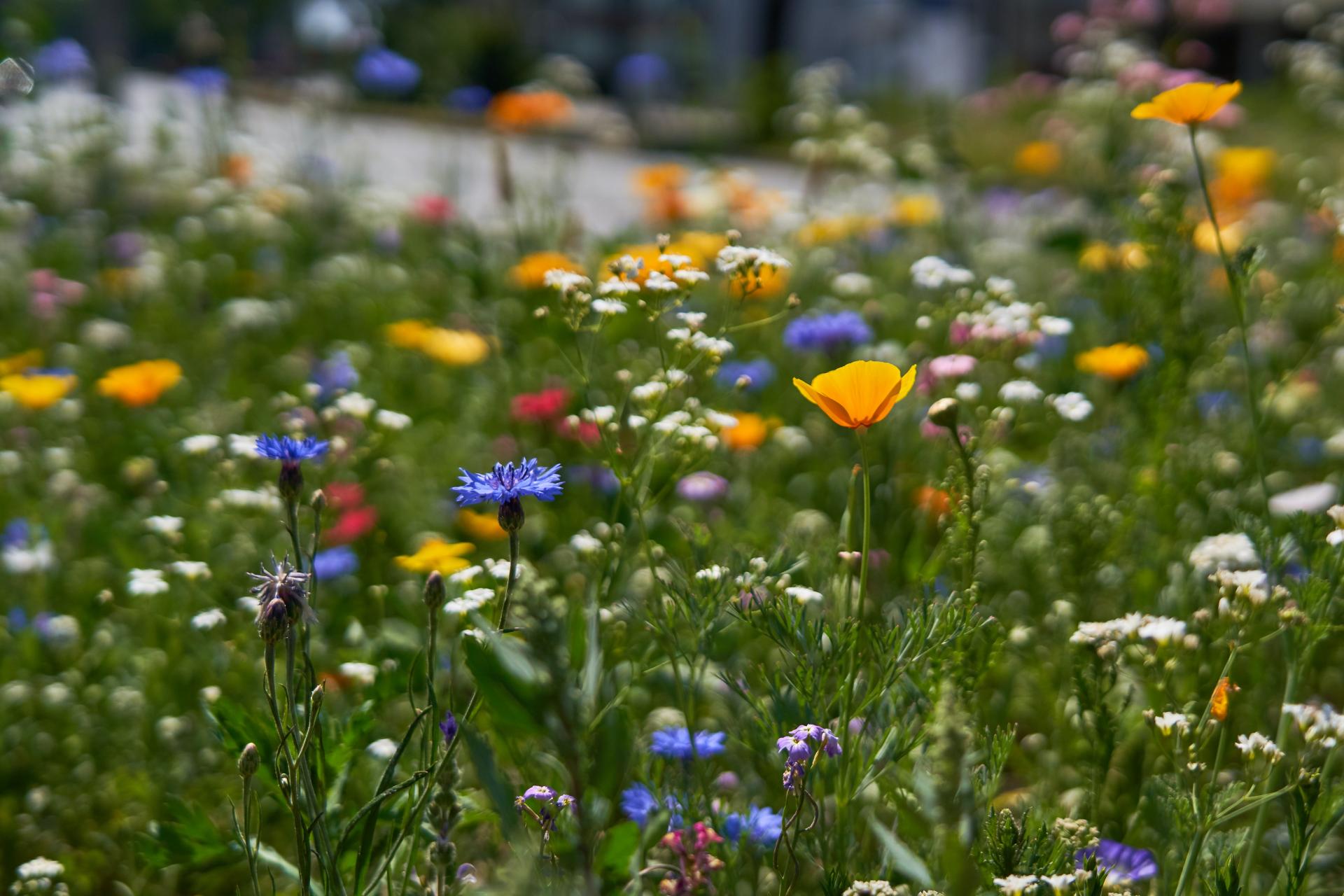
If cut flowers are desired, it is best to harvest the flowers early in the morning while it is still cold outside while the bloom is still closed. To open your flowers place in room temperature water out of direct sun. A. coronaria blooms can be purchased from some florists, between November and June depending upon availability.
"Anemone" has several different meanings depending on the culture and context in which the flower is being used.
Several of the Western meanings of anemone flowers pertain to the Greek mythology of the origin of the anemone flower featuring Adonis and Aphrodite. The goddess Aphrodite kept the mortal man Adonis as a lover; when Adonis was gored by a wild boar, Aphrodite's tears at his death mixed with his blood and gave rise to the anemone. In other versions, the boar was sent by other jealous Greek gods to murder Adonis. These origin stories reflect the classical dual meanings of the arrival of spring breezes and the death of a loved one.
In the Victorian language of flowers, the anemone represented a forsaken love of any kind, while European peasants carried them to ward off pests and disease as well as bad luck.
In other cultures, the meanings differ. In Chinese and Egyptian cultures, the flower of anemone was considered a symbol of illness due to its coloring. The anemone can be a symbol of bad luck in Eastern cultures. The Japanese anemone may be associated with ill tidings.
Anemone are perennials that have basal leaves with long leaf-stems that can be upright or prostrate. Leaves are simple or compound with lobed, parted, or undivided leaf blades. The leaf margins are toothed or entire.
Flowers with 4–27 sepals are produced singly, in cymes of 2–9 flowers, or in umbels, above a cluster of leaf- or sepal-like bracts. Sepals may be any color. The pistils have one ovule. The flowers have nectaries, but petals are missing in the majority of species.
The fruits are ovoid to obovoid shaped achenes that are collected together in a tight cluster, ending variously lengthened stalks; though many species have sessile clusters terminating the stems. The achenes are beaked and some species have feathery hairs attached to them.
A common name for anemones is "wind flowers". Anemone is derived from the Greek word anemoi, which in English means "winds".
According to the Oxford English Dictionary, Greek ἀνεμώνη (anemōnē) means 'daughter of the wind', from ἄνεμος (ánemos, 'wind') + feminine patronymic suffix -ώνη (-ṓnē, so 'daughter of') The Metamorphoses of Ovid tells that the plant was created by the goddess Venus when she sprinkled nectar on the blood of her dead lover Adonis, and Ovid describes the etymology as referring to the frailty of the petals that can be easily blown away by the wind. "Anemone" may also refer to Nea'man, the Phoenician name for Adonis, referring to an earlier Syrian myth of the god of vegetation, also tusked by a boar.The name windflower is used for the whole genus as well as the wood anemone A. nemorosa.
Some of the species are grown in gardens. Their popularity varies by species and region. In addition to certain straight species being available, hybrids and cultivars are available for certain species. Certain species, such as A. coronaria, are typically only available in hybrid form while others, such as A. blanda are nearly always sold in straight species form.
Cultivated anemones are nearly always one of the following colors: bluish violet, white, pink, red, and hues in a range between violet and pink. There are no truly blue anemones, despite the frequent use of the label "blue" in marketing to describe blue-violet flowers (flowers that are more violet than blue). Color labelling inaccuracy in marketing is found in treatments of numerous other genera, especially as it concerns the color blue — although some popular garden flowers from the same family are actually blue, such as some selections from Delphinium. One species of anemone, Anemone ranunculoides, is unusual for its yellow flowers. Typically, only double-flowered forms of it are cultivated.

In horticultural terms there are three main groups:
1. spring-flowering species found in woodland and alpine meadows, often tuberous or rhizomatous; e.g. A. nemorosa, A. blanda
2. spring- and summer-flowering species from hot dry areas, with tuberous roots, e.g. A. coronaria
3. summer- and autumn-flowering species with fibrous roots, which thrive in moist dappled shade; e.g. A. hupehensis
The spring-flowering fall-planted ephemeral species Anemone blanda is grown in large-scale commercial cultivation and can be purchased in bulk quantities. It is most commonly-available with a bluish violet flower (usually erroneously called "Blue Shades" despite its flower being more purple than blue) that varies from intense to pale, depending upon the individual plant and possibly soil conditions. A white-flowered form is the second-most common type. The least common of the commonly-cultivated forms is a pale pink. The violet, and especially pink, forms sometimes possess petals that fade to white near the flower center. The genus contains quite a number of other spring-flowering species. A. hortensis and the hybrid A. fulgens have less-divided leaves than some others and have rose-purple or scarlet flowers.
Among the most well-known anemones is A. coronaria, often called the poppy anemone. It is a tuberous-rooted plant with parsley-like divided leaves and large poppy-like blossoms on stalks of from 15–20 cm high. It can be planted in the fall in zones 7 or 8 without extra protection or in spring in cooler zones. If planted in fall it will flower in the spring and if planted in the spring it will flower in late summer. The flowers are typically scarlet, crimson, bluish purple, reddish purple, or white. There are also double-flowered varieties, in which the stamens in the centre are replaced by a tuft of narrow petals. It has been used as a garden plant, in hybrid form in particular, for a long time in some parts of the world. Double forms are named varieties. Hybrids of the de Caen and St. Brigid groups are the most prevalent on the market. In Israel, large numbers of red-flowering non-hybrid A. coronaria can be seen growing in certain natural areas.
Anemone hupehensis, and its white cultivar 'Honorine Joubert', the latter especially, are well-known autumn-flowering selections. They grow well in well-drained but moisture-retentive soil and reach 60–100 cm in height, blooming continually for several weeks. A. hupehensis, A. vitifolia, and their hybrids and are particularly attractive to honeybees. A number of low-growing species, such as the native British A. nemorosa and A. apennina, have woodlands and other shady places as their habitat. Hepatica species typically also grow in shade.
Garden-cultivated anemones generally grow best in a loamy well-drained evenly-moist fertile soil, although the ephemeral A. blanda does not require as much moisture during the summer when it is dormant (unlike the related Eranthis species that can suffer if they become too dry even while dormant). Some prairie species that are rarely cultivated, such as Anemone cylindrica, grow well in drier warmer conditions and poor soil. A. coronaria has been described by some professional sources as preferring acidic soil and by others as preferring alkaline soil. Hardy species may be planted in October in many zones. Unlike a hardier species such as A. blanda, A. coronaria is described as hardy only as low as climate zone 7 by some sources and by others hardy only as low as zone 8. Various strategies, such as the use of protection, can be tried to plant them outdoors in fall in zone 6 but results may vary. As with other plants, some species can be readily raised from seed while some hybrids may be sterile. A. blanda typically blooms in mid spring. The larger anemone species typically grow well in partial shade, or in full sun provided they are shielded from the hottest sun in southern areas. A well-drained soil, enriched with compost, is typically utilized.

If cut flowers are desired, it is best to harvest the flowers early in the morning while it is still cold outside while the bloom is still closed. To open your flowers place in room temperature water out of direct sun. A. coronaria blooms can be purchased from some florists, between November and June depending upon availability.
"Anemone" has several different meanings depending on the culture and context in which the flower is being used.
Several of the Western meanings of anemone flowers pertain to the Greek mythology of the origin of the anemone flower featuring Adonis and Aphrodite. The goddess Aphrodite kept the mortal man Adonis as a lover; when Adonis was gored by a wild boar, Aphrodite's tears at his death mixed with his blood and gave rise to the anemone. In other versions, the boar was sent by other jealous Greek gods to murder Adonis. These origin stories reflect the classical dual meanings of the arrival of spring breezes and the death of a loved one.
In the Victorian language of flowers, the anemone represented a forsaken love of any kind, while European peasants carried them to ward off pests and disease as well as bad luck.
In other cultures, the meanings differ. In Chinese and Egyptian cultures, the flower of anemone was considered a symbol of illness due to its coloring. The anemone can be a symbol of bad luck in Eastern cultures. The Japanese anemone may be associated with ill tidings.
0
0
文章
ritau
2020年07月01日

Chamomile (American English) or camomile (British English) is the common name for several daisy-like plants of the family Asteraceae. Two of the species are commonly used to make herbal infusions for traditional medicine, and there is some evidence that chamomile has an effect on health.
The word "chamomile" derived via French and Latin from Greek χαμαίμηλον (khamaimēlon), "earth apple", from χαμαί (khamai) "on the ground" and μῆλον (mēlon) "apple". First used in the 13th century, the spelling "chamomile" corresponds to the Latin chamomilla and Greek chamaimelon. The spelling "camomile" is a British derivation from the French.
Some commonly used species include:
-Matricaria chamomilla Often called "German chamomile" or "Water of Youth",
-Chamaemelum nobile, Roman, English or garden chamomile, also frequently used, (C. nobile Treneague is normally used to create a chamomile lawn).
-A number of other species common names include the word "chamomile". This does not mean they are used in the same manner as the species used in the herbal tea known as "chamomile". Plants including the common name "chamomile", of the family Asteraceae, are:
*Chamomilla recutita, German Chamomile
*Anthemis arvensis, corn, scentless or field chamomile
*Anthemis cotula, stinking chamomile
*Cladanthus mixtus, Moroccan chamomile
*Chamaemelum nobile, Roman Chamomile
*Cota tinctoria, dyer's, golden, oxeye, or yellow chamomile
*Eriocephalus punctulatus, Cape chamomile
*Matricaria discoidea, wild chamomile or pineapple weed
*Tripleurospermum inodorum, wild, scentless or false chamomile

Chamomile tea is an herbal infusion made from dried flowers and hot water.Two types of chamomile used are German chamomile (Matricaria recutita) and Roman chamomile (Chamaemelum nobile). Chamomile may be used as a flavoring agent in foods and beverages, mouthwash, soaps, or cosmetics. When used as an herbal product, such as in tea or as a topical skin cream, chamomile is not likely to have significant health effects or major side effects.
Use of chamomile has potential to cause adverse interactions with numerous herbal products and prescription drugs, and may worsen pollen allergies. Apigenin, a phytochemical in chamomile, may interact with anticoagulant agents and nonsteroidal anti-inflammatory drugs, while other phytochemicals may adversely interact with sleep-enhancing herbal products and vitamins.
Chamomile is not recommended to be taken with aspirin or non-salicylate NSAIDs (non-steroidal anti-inflammatory drugs), as it may cause herb-drug interaction.
"Chamomile consists of several ingredients including coumarin, glycoside, herniarin, flavonoid, farnesol, nerolidol and germacranolide. Despite the presence of coumarin, as chamomile’s effect on the coagulation system has not yet been studied, it is unknown if a clinically significant drug-herb interaction exists with antiplatelet/anticoagulant drugs. However, until more information is available, it is not recommended to use these substances concurrently."
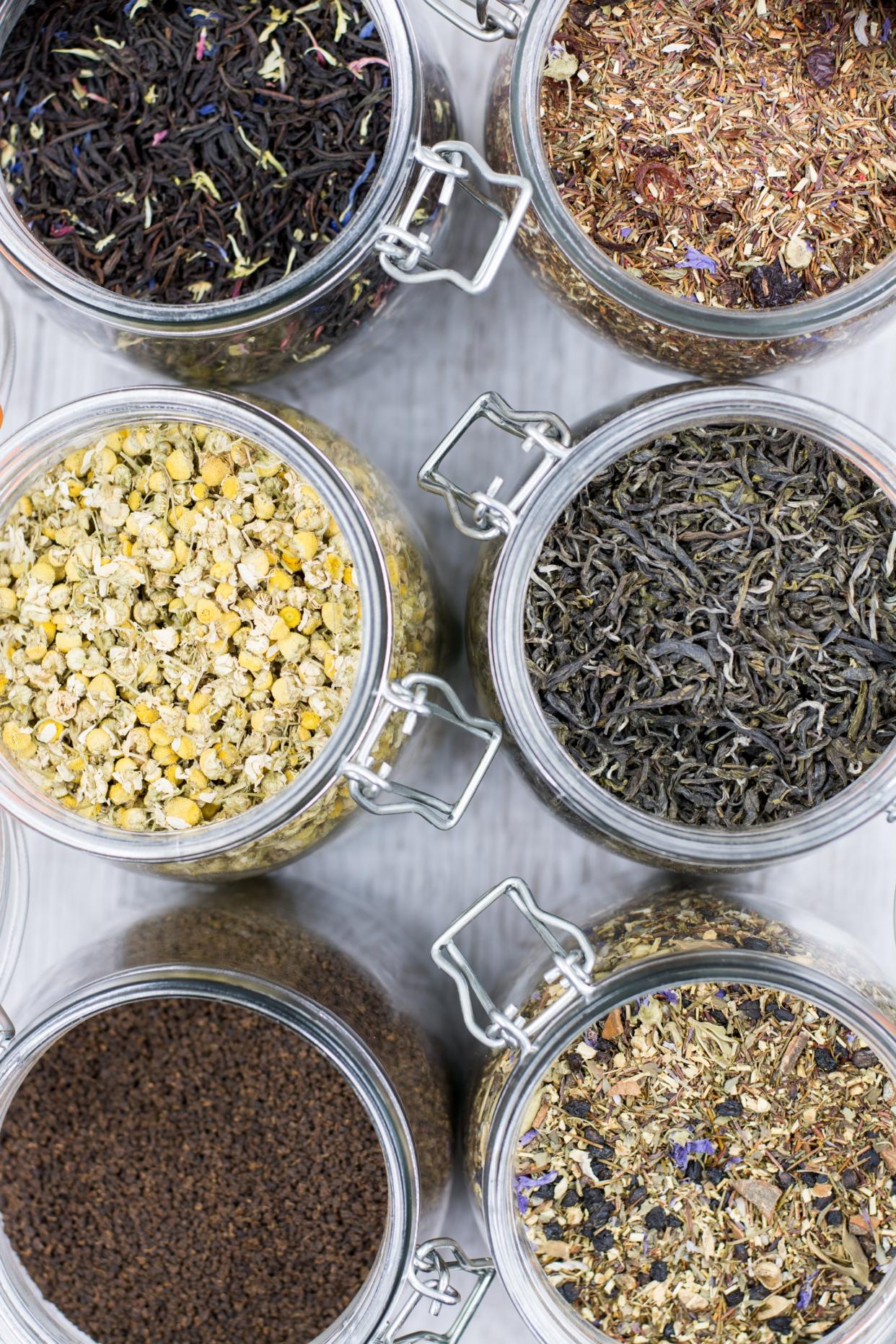
People who are allergic to ragweed (also in the daisy family) may be allergic to chamomile due to cross-reactivity. Chamomile should not be used by people with past or present cancers of the breast, ovary, uterus, endometriosis or uterine fibroids.
Chamomile has also historically been used in beer.Unlike tea, in which only the flowers are used, the whole plant has been used. The bitter taste is useful in beer, but it was also used for medicinal purposes. Modern craft breweries and homebrewers use chamomile, and there are several hundred commercially brewed beers with chamomile.
The word "chamomile" derived via French and Latin from Greek χαμαίμηλον (khamaimēlon), "earth apple", from χαμαί (khamai) "on the ground" and μῆλον (mēlon) "apple". First used in the 13th century, the spelling "chamomile" corresponds to the Latin chamomilla and Greek chamaimelon. The spelling "camomile" is a British derivation from the French.
Some commonly used species include:
-Matricaria chamomilla Often called "German chamomile" or "Water of Youth",
-Chamaemelum nobile, Roman, English or garden chamomile, also frequently used, (C. nobile Treneague is normally used to create a chamomile lawn).
-A number of other species common names include the word "chamomile". This does not mean they are used in the same manner as the species used in the herbal tea known as "chamomile". Plants including the common name "chamomile", of the family Asteraceae, are:
*Chamomilla recutita, German Chamomile
*Anthemis arvensis, corn, scentless or field chamomile
*Anthemis cotula, stinking chamomile
*Cladanthus mixtus, Moroccan chamomile
*Chamaemelum nobile, Roman Chamomile
*Cota tinctoria, dyer's, golden, oxeye, or yellow chamomile
*Eriocephalus punctulatus, Cape chamomile
*Matricaria discoidea, wild chamomile or pineapple weed
*Tripleurospermum inodorum, wild, scentless or false chamomile

Chamomile tea is an herbal infusion made from dried flowers and hot water.Two types of chamomile used are German chamomile (Matricaria recutita) and Roman chamomile (Chamaemelum nobile). Chamomile may be used as a flavoring agent in foods and beverages, mouthwash, soaps, or cosmetics. When used as an herbal product, such as in tea or as a topical skin cream, chamomile is not likely to have significant health effects or major side effects.
Use of chamomile has potential to cause adverse interactions with numerous herbal products and prescription drugs, and may worsen pollen allergies. Apigenin, a phytochemical in chamomile, may interact with anticoagulant agents and nonsteroidal anti-inflammatory drugs, while other phytochemicals may adversely interact with sleep-enhancing herbal products and vitamins.
Chamomile is not recommended to be taken with aspirin or non-salicylate NSAIDs (non-steroidal anti-inflammatory drugs), as it may cause herb-drug interaction.
"Chamomile consists of several ingredients including coumarin, glycoside, herniarin, flavonoid, farnesol, nerolidol and germacranolide. Despite the presence of coumarin, as chamomile’s effect on the coagulation system has not yet been studied, it is unknown if a clinically significant drug-herb interaction exists with antiplatelet/anticoagulant drugs. However, until more information is available, it is not recommended to use these substances concurrently."

People who are allergic to ragweed (also in the daisy family) may be allergic to chamomile due to cross-reactivity. Chamomile should not be used by people with past or present cancers of the breast, ovary, uterus, endometriosis or uterine fibroids.
Chamomile has also historically been used in beer.Unlike tea, in which only the flowers are used, the whole plant has been used. The bitter taste is useful in beer, but it was also used for medicinal purposes. Modern craft breweries and homebrewers use chamomile, and there are several hundred commercially brewed beers with chamomile.
0
0
文章
ritau
2020年06月28日

*Handling an Infestation*
1. Rinse plants that have a minor infestation. If you only notice a few lace bugs per leaf, you might be able to use a hose to get rid of them. Make sure your hose has a strong stream of water, and spray down the plant to wash the bugs away.
2. Spray insecticides onto the bottom of leaves. Lace bugs and their larva often feed on the bottom of leaves, so you will need to spray the insecticide directly onto the undersides of the leaves. Start in late spring when the eggs first hatch, and reapply every ten to fourteen days.
-You can use an insecticidal soap, but make sure you spray the bugs directly with it. Pesticides, such as pyrethrin or neem oil, also work.
-Insecticides will kill nymphs and adults but not eggs.
3. Apply horticultural oil in the fall to kill eggs. The eggs appear as black spots along the veins of the leaf. These cannot be killed with insecticides, but they can be killed with horticultural oil. Spray it along the underside of each leaf in the fall.
4. Apply neonicotinoids to the soil if other methods haven't worked. Neonicotinoids include imidacloprid and dinotefuran. When added to the soil, the plant may absorb the substances, which can keep the plant bug free for a whole season. These typically come as a granule or as a concentration.
If you have a granule version, sprinkle it around the base of the plant. Water the plant afterwards.
If you have a concentration, follow the instructions on the label to mix it with water. Pour it evenly around the base, and water the plant afterwards.
Keep in mind that neonicotinoids may also kill off beneficial bugs.
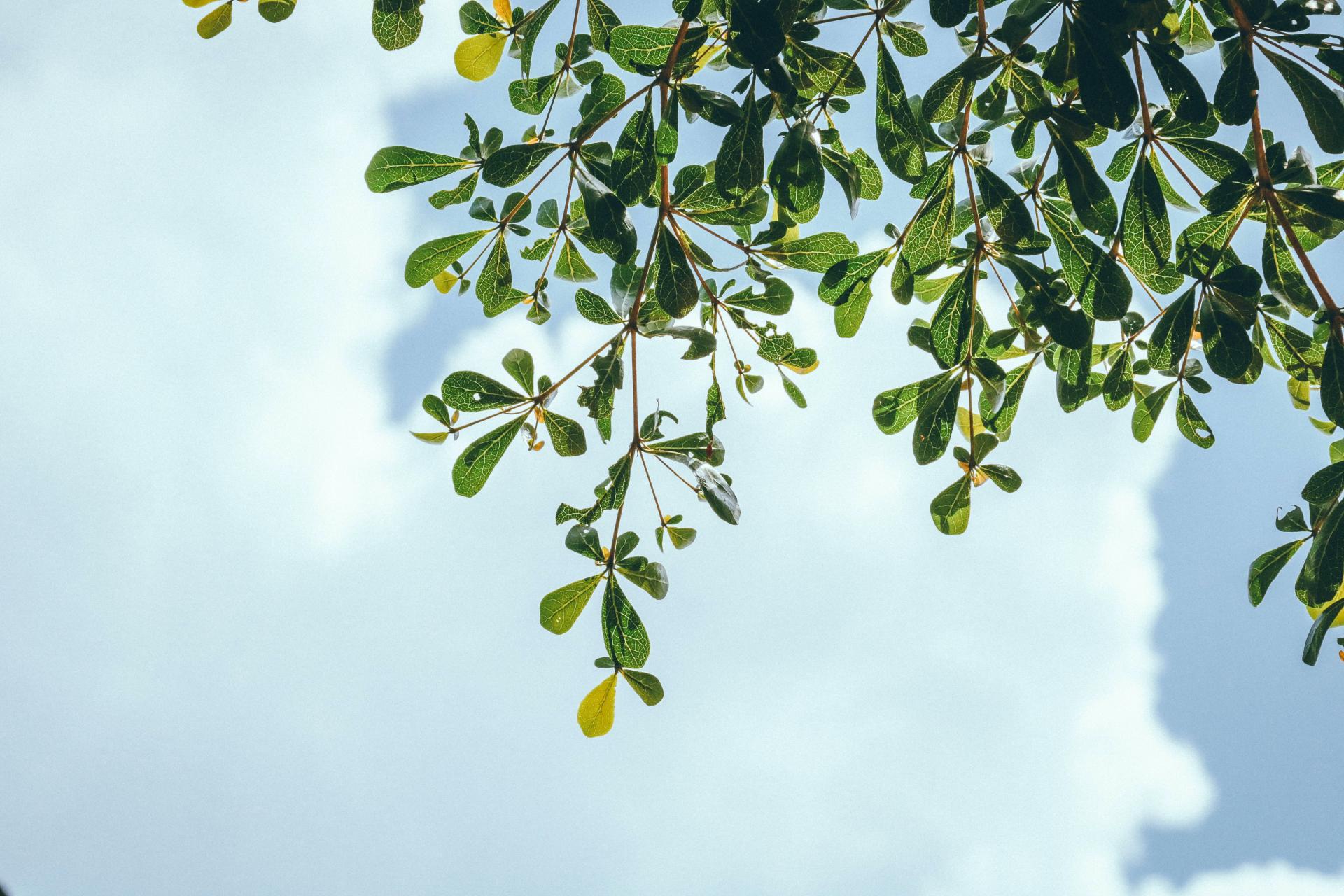
*Assessing the Damage*
1. Examine the leaves. You only need to treat plants that are currently infested with lace bugs. Lace bugs cause white spots to appear on the leaf. The larger your infestation, the paler your leaves will become. A few white dots may mean a small infestation while leaves that are almost completely white indicate a much larger problem.
-The underside of the leaf may be covered in dark excrement.
-Do this every two weeks, starting in early spring and ending in late summer.
2. Check the undersides of leaves to look for the bugs. There are three different stages of a lace bug’s life. If you can reduce their numbers in early spring while they are still nymphs, you may be able to prevent an infestation in summer.
-Eggs are small, black, and oval. Three generations of eggs can be laid in one year, beginning in spring and ending in fall. Fall eggs will hatch next spring.
-Nymphs are small. They may have black, spotted markings, and they have not developed wings yet. Nymphs can hatch as early as April and as late as September.
-Adults have large wings with a lacy pattern. They may start appearing in early summer.
3. Monitor for early leaf drop. Severe infestations may cause the plant's leaves to drop early. At this point, you should use heavier pesticides to eliminate the lace bugs. New leaves should grow back as long as the infestation is handled.

1. Rinse plants that have a minor infestation. If you only notice a few lace bugs per leaf, you might be able to use a hose to get rid of them. Make sure your hose has a strong stream of water, and spray down the plant to wash the bugs away.
2. Spray insecticides onto the bottom of leaves. Lace bugs and their larva often feed on the bottom of leaves, so you will need to spray the insecticide directly onto the undersides of the leaves. Start in late spring when the eggs first hatch, and reapply every ten to fourteen days.
-You can use an insecticidal soap, but make sure you spray the bugs directly with it. Pesticides, such as pyrethrin or neem oil, also work.
-Insecticides will kill nymphs and adults but not eggs.
3. Apply horticultural oil in the fall to kill eggs. The eggs appear as black spots along the veins of the leaf. These cannot be killed with insecticides, but they can be killed with horticultural oil. Spray it along the underside of each leaf in the fall.
4. Apply neonicotinoids to the soil if other methods haven't worked. Neonicotinoids include imidacloprid and dinotefuran. When added to the soil, the plant may absorb the substances, which can keep the plant bug free for a whole season. These typically come as a granule or as a concentration.
If you have a granule version, sprinkle it around the base of the plant. Water the plant afterwards.
If you have a concentration, follow the instructions on the label to mix it with water. Pour it evenly around the base, and water the plant afterwards.
Keep in mind that neonicotinoids may also kill off beneficial bugs.

*Assessing the Damage*
1. Examine the leaves. You only need to treat plants that are currently infested with lace bugs. Lace bugs cause white spots to appear on the leaf. The larger your infestation, the paler your leaves will become. A few white dots may mean a small infestation while leaves that are almost completely white indicate a much larger problem.
-The underside of the leaf may be covered in dark excrement.
-Do this every two weeks, starting in early spring and ending in late summer.
2. Check the undersides of leaves to look for the bugs. There are three different stages of a lace bug’s life. If you can reduce their numbers in early spring while they are still nymphs, you may be able to prevent an infestation in summer.
-Eggs are small, black, and oval. Three generations of eggs can be laid in one year, beginning in spring and ending in fall. Fall eggs will hatch next spring.
-Nymphs are small. They may have black, spotted markings, and they have not developed wings yet. Nymphs can hatch as early as April and as late as September.
-Adults have large wings with a lacy pattern. They may start appearing in early summer.
3. Monitor for early leaf drop. Severe infestations may cause the plant's leaves to drop early. At this point, you should use heavier pesticides to eliminate the lace bugs. New leaves should grow back as long as the infestation is handled.

0
0
文章
ritau
2020年06月22日

*Removing Dead Leaves, Limbs, and Flowers
1. Use sharp scissors or garden shears. Make sure the scissors or garden shears are very sharp, as dull shears can damage the plants. If you notice any dirt on the shears, soak them in water with a teaspoon of bleach and then wipe them dry. A clean tool will ensure your plants are not exposed to bacteria or pests when you prune them.
-You can find garden shears for pruning online or at your local hardware store.
-If you are worried about scratching your hands while you prune, wear gardening gloves.
2. Prune the plants at the beginning of their growing season. If you have houseplants that do not flower, prune them in late winter. For houseplants with flowers or blooms, wait until they have bloomed before you prune them.
- Do not prune houseplants when unopened buds are present on the stems.
3. Remove dead leaves and limbs at a 45 degree angle. Look for any leaves or limbs on the plant that are brown or discolored. They may also appear limp or dry. Use the shears to cut them off just below the brown or dead area at a 45 degree angle. This will ensure you leave as much of the healthy foliage on the plant as possible.
-Do not cut off any leaves or limbs that still appear green and vibrant.
-If a large section of the leafy area appears dead, you can cut off the entire branch. Leave the main stem intact and remove branches shooting off of the stem at a 45 degree angle.
4. Trim off any dead flowers. If you have houseplants that are flowering, make sure you check them over for any dead flowers and remove them. The flowers may appear brown, discolored, and limp. They may also feel dry to the touch. Cut the dead flowers off with the shears at the base of the flower’s head.
-Removing dead and dying flowers on the plant will encourage the growth of newer, more vibrant blooms.
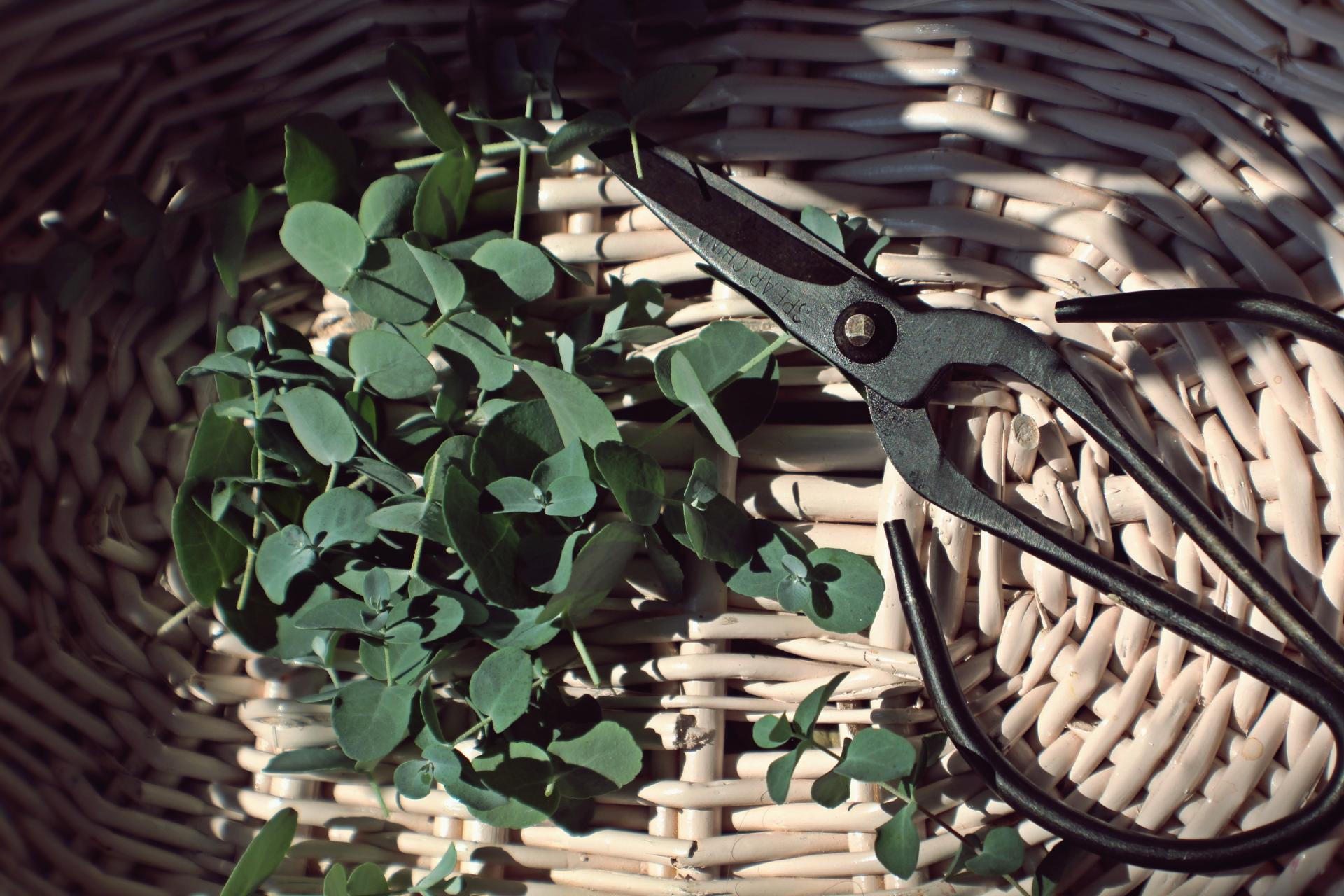
*Cutting Back Overgrown Branches and Stems
1. Prune back half of the longest branches on the plant. Use the shears to cut them back about a third of their length. Trim the branches off at a 45 degree angle.
-If there are any side shoots on the branches further down the base of the plant, you can prune a few of these shoots.
-Do not cut off any nodules on the plants as you prune, which are new buds that have not bloomed or opened yet.
2.Remove leggy stems. Check the plant for any stems that are unusually long. They may appear loose or straggling, falling off different areas of the plant. Pruning leggy stems will help the plant to grow in a fuller, more even pattern. Use the shears to cut the leggy stems back to one third their length, cutting at a 45 degree angle.
3. Pinch off the stems. If you have soft-stemmed houseplants like coleus, heartleaf philodendron, and English ivy, make sure you pinch them regularly. Use your thumb and forefinger to remove the tip of a stem. Pinch above the node, which is the growing point where the leaf is attached to the plant.
- Pinching off the stems can help maintain the bushy shape of the plant and encourage even growth. It also helps to prevent the growth of leggy stems.

4. Remove 10-20% of the plant’s foliage at a time. Do not over prune the plant, as this can make it difficult for it to grow properly. Make selective cuts to the plant, removing only 10-20% of the foliage at a time. Wait a few weeks to one month to prune the plants again.
-Always leave some foliage on the plant when you prune. If you are in doubt, under prune the plant and then reevaluate it a few weeks later.
1. Use sharp scissors or garden shears. Make sure the scissors or garden shears are very sharp, as dull shears can damage the plants. If you notice any dirt on the shears, soak them in water with a teaspoon of bleach and then wipe them dry. A clean tool will ensure your plants are not exposed to bacteria or pests when you prune them.
-You can find garden shears for pruning online or at your local hardware store.
-If you are worried about scratching your hands while you prune, wear gardening gloves.
2. Prune the plants at the beginning of their growing season. If you have houseplants that do not flower, prune them in late winter. For houseplants with flowers or blooms, wait until they have bloomed before you prune them.
- Do not prune houseplants when unopened buds are present on the stems.
3. Remove dead leaves and limbs at a 45 degree angle. Look for any leaves or limbs on the plant that are brown or discolored. They may also appear limp or dry. Use the shears to cut them off just below the brown or dead area at a 45 degree angle. This will ensure you leave as much of the healthy foliage on the plant as possible.
-Do not cut off any leaves or limbs that still appear green and vibrant.
-If a large section of the leafy area appears dead, you can cut off the entire branch. Leave the main stem intact and remove branches shooting off of the stem at a 45 degree angle.
4. Trim off any dead flowers. If you have houseplants that are flowering, make sure you check them over for any dead flowers and remove them. The flowers may appear brown, discolored, and limp. They may also feel dry to the touch. Cut the dead flowers off with the shears at the base of the flower’s head.
-Removing dead and dying flowers on the plant will encourage the growth of newer, more vibrant blooms.

*Cutting Back Overgrown Branches and Stems
1. Prune back half of the longest branches on the plant. Use the shears to cut them back about a third of their length. Trim the branches off at a 45 degree angle.
-If there are any side shoots on the branches further down the base of the plant, you can prune a few of these shoots.
-Do not cut off any nodules on the plants as you prune, which are new buds that have not bloomed or opened yet.
2.Remove leggy stems. Check the plant for any stems that are unusually long. They may appear loose or straggling, falling off different areas of the plant. Pruning leggy stems will help the plant to grow in a fuller, more even pattern. Use the shears to cut the leggy stems back to one third their length, cutting at a 45 degree angle.
3. Pinch off the stems. If you have soft-stemmed houseplants like coleus, heartleaf philodendron, and English ivy, make sure you pinch them regularly. Use your thumb and forefinger to remove the tip of a stem. Pinch above the node, which is the growing point where the leaf is attached to the plant.
- Pinching off the stems can help maintain the bushy shape of the plant and encourage even growth. It also helps to prevent the growth of leggy stems.

4. Remove 10-20% of the plant’s foliage at a time. Do not over prune the plant, as this can make it difficult for it to grow properly. Make selective cuts to the plant, removing only 10-20% of the foliage at a time. Wait a few weeks to one month to prune the plants again.
-Always leave some foliage on the plant when you prune. If you are in doubt, under prune the plant and then reevaluate it a few weeks later.
0
0
文章
ritau
2020年06月07日

Mealybugs are insects in the family Pseudococcidae, unarmored scale insects found in moist, warm habitats. Many species are considered pests by some humans as they feed on plant juices of greenhouse plants, house plants and subtropical trees and also act as a vector for several plant diseases. Some Ants, however live in symbiotic relationships with them.
Methods
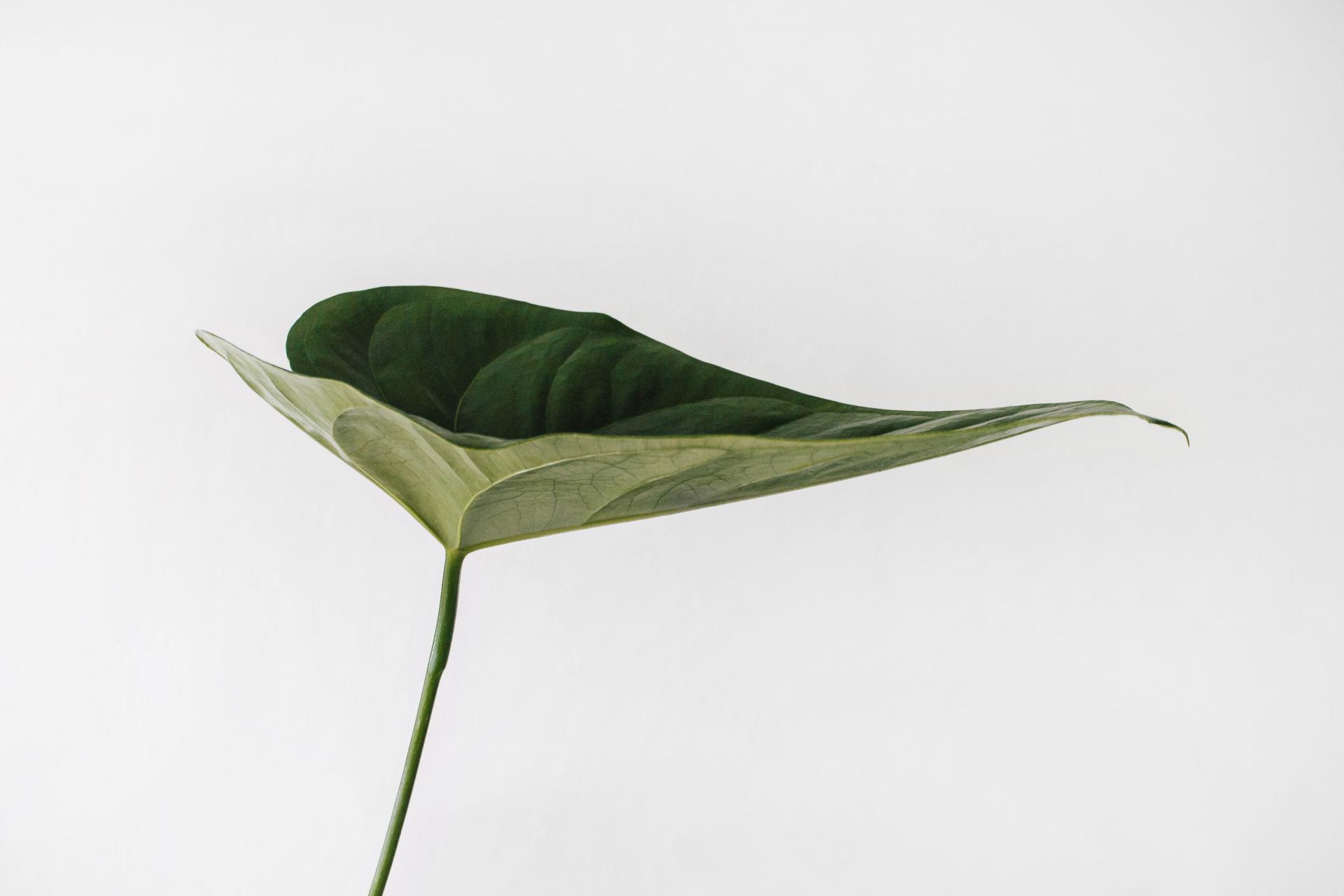
*Killing Small Infestations with Rubbing Alcohol
1. Dip a cotton swab in 70-percent isopropyl rubbing alcohol. Avoid using other kinds of alcohol or you could damage the plant you’re treating.
2. Rub the cotton swab over the surface of the infested plant. Make sure you get underneath the leaves and inside the crevices on the branches. Mealybugs tend to hide in hard-to-reach places, so it’s important you completely cover the plant you’re treating with the rubbing alcohol.
3. Use a spray bottle to apply rubbing alcohol to large plants. Fill the spray bottle with rubbing alcohol and spray it over the surface of large plants that are infested with mealybugs.
4. Remove any mealybugs you see on the plant. Mealybugs look like small, white bugs with a waxy coating. Pick the mealybugs off with your hand and dispose of them in the trash. Mealybugs don't bite, but you may want to wear gardening gloves so you don't get their waxy coating on your fingers.
5. Repeat weekly until the mealybugs are gone. Since mealybugs are good at hiding in hard to reach places, you'll likely need to do multiple applications of rubbing alcohol before they're all killed. Even if you don't see anymore mealybugs, it's a good idea to do a few more applications just in case there are some lingering bugs.You'll know the mealybugs are gone when you can't see anymore on the plant and the plant remains healthy and green.
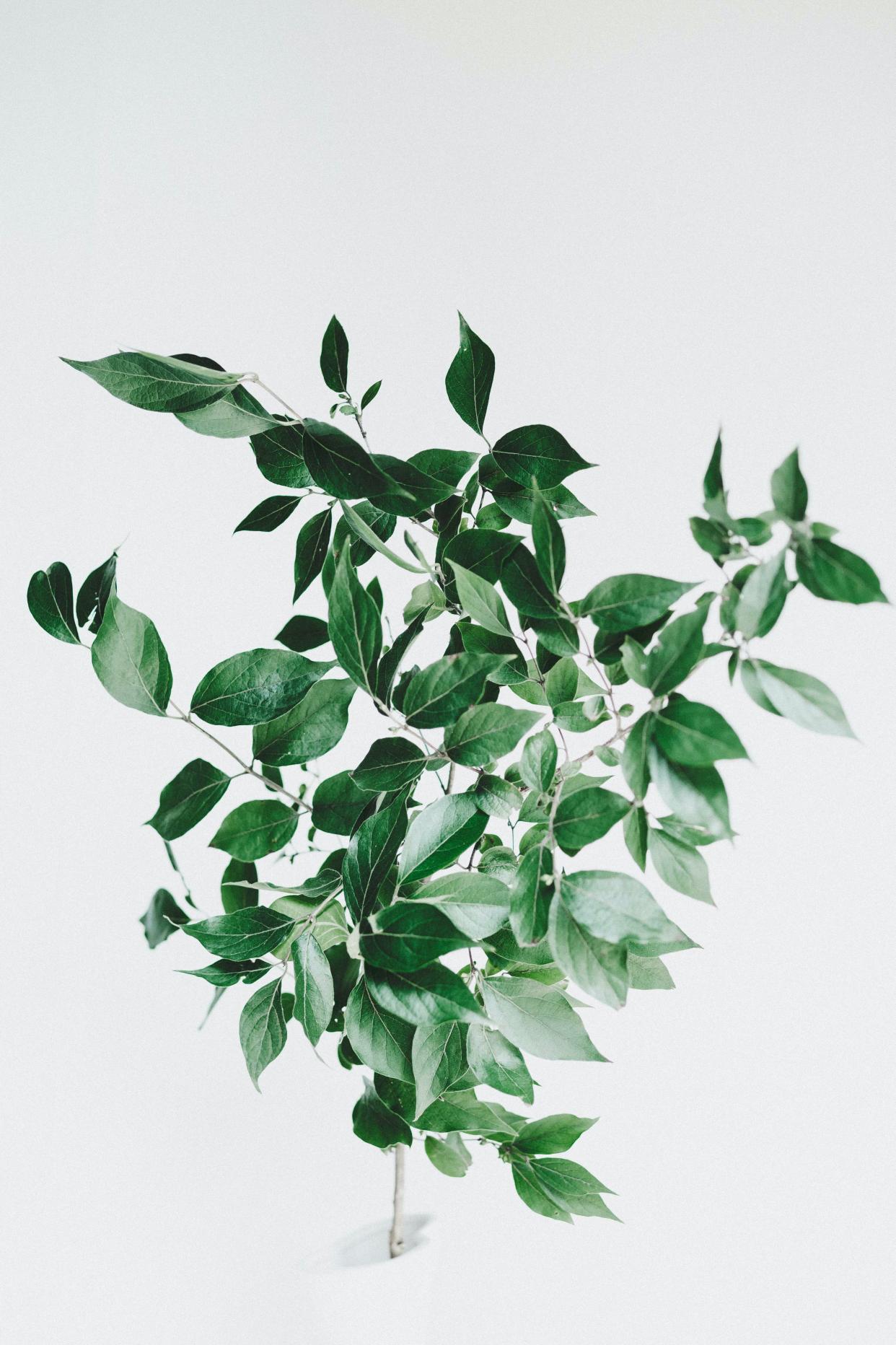
*Using Neem Oil for Potted or Shaded Plants
1. Mix together water, liquid dish soap, and neem oil in a spray bottle. Use 1 teaspoon (4.9 mL) of neem oil and 2-3 drops of dish soap. Neem oil is a vegetable oil that comes from neem trees that can be used to kill mealybugs.
2. Spray the plant you’re treating until it’s soaked. Make sure you spray underneath the leaves, at the base of the branches, and over the top of the soil the plant is in. You want the mealybugs to be completely smothered with the neem oil mixture.
3. Move the plant to a shaded area to dry. Don’t keep the plant in direct sunlight or extreme heat or it could burn. If you’re spraying outdoor plants that are rooted in the ground, wait for a shady day when it’s below 85 °F (29 °C) out.
4. Spray the plant weekly until the mealybugs are gone. One application of neem oil probably won’t kill all the mealybugs on the plant. Because mealybugs have a rapid lifecycle, you’ll need to routinely kill the newly-hatched bugs every week until all of the mealybugs have been killed off.
If the plant looks healthy and you don't see anymore mealybugs on it, they're most likely gone.
Methods

*Killing Small Infestations with Rubbing Alcohol
1. Dip a cotton swab in 70-percent isopropyl rubbing alcohol. Avoid using other kinds of alcohol or you could damage the plant you’re treating.
2. Rub the cotton swab over the surface of the infested plant. Make sure you get underneath the leaves and inside the crevices on the branches. Mealybugs tend to hide in hard-to-reach places, so it’s important you completely cover the plant you’re treating with the rubbing alcohol.
3. Use a spray bottle to apply rubbing alcohol to large plants. Fill the spray bottle with rubbing alcohol and spray it over the surface of large plants that are infested with mealybugs.
4. Remove any mealybugs you see on the plant. Mealybugs look like small, white bugs with a waxy coating. Pick the mealybugs off with your hand and dispose of them in the trash. Mealybugs don't bite, but you may want to wear gardening gloves so you don't get their waxy coating on your fingers.
5. Repeat weekly until the mealybugs are gone. Since mealybugs are good at hiding in hard to reach places, you'll likely need to do multiple applications of rubbing alcohol before they're all killed. Even if you don't see anymore mealybugs, it's a good idea to do a few more applications just in case there are some lingering bugs.You'll know the mealybugs are gone when you can't see anymore on the plant and the plant remains healthy and green.

*Using Neem Oil for Potted or Shaded Plants
1. Mix together water, liquid dish soap, and neem oil in a spray bottle. Use 1 teaspoon (4.9 mL) of neem oil and 2-3 drops of dish soap. Neem oil is a vegetable oil that comes from neem trees that can be used to kill mealybugs.
2. Spray the plant you’re treating until it’s soaked. Make sure you spray underneath the leaves, at the base of the branches, and over the top of the soil the plant is in. You want the mealybugs to be completely smothered with the neem oil mixture.
3. Move the plant to a shaded area to dry. Don’t keep the plant in direct sunlight or extreme heat or it could burn. If you’re spraying outdoor plants that are rooted in the ground, wait for a shady day when it’s below 85 °F (29 °C) out.
4. Spray the plant weekly until the mealybugs are gone. One application of neem oil probably won’t kill all the mealybugs on the plant. Because mealybugs have a rapid lifecycle, you’ll need to routinely kill the newly-hatched bugs every week until all of the mealybugs have been killed off.
If the plant looks healthy and you don't see anymore mealybugs on it, they're most likely gone.
0
0
文章
ritau
2020年05月31日

Camellia is a genus of flowering plants in the family Theaceae. They are found in eastern and southern Asia, from the Himalayas east to Japan and Indonesia. There are 100–300 described species, with some controversy over the exact number. There are also around 3,000 hybrids. The genus was named by Linnaeus after the Jesuit botanist Georg Joseph Kamel, who worked in the Philippines and described a species of camellia (although Linnaeus did not refer to Kamel's account when discussing the genus). Camellias are famous throughout East Asia; they are known as cháhuā (茶花, 'tea flower') in Chinese, tsubaki (椿) in Japanese, dongbaek-kkot (동백꽃) in Korean, and as hoa trà or hoa chè in Vietnamese.
Of economic importance in East Asia, Southeast Asia, and the Indian subcontinent, leaves of C. sinensis are processed to create the popular beverage tea. The ornamental C. japonica, C. sasanqua and their hybrids are the source of hundreds of garden cultivars. C. oleifera produces tea seed oil, used in cooking and cosmetics.
Camellias are evergreen shrubs or small trees up to 20 m (66 ft) tall. Their leaves are alternately arranged, simple, thick, serrated, and usually glossy. Their flowers are usually large and conspicuous, one to 12 cm in diameter, with five to nine petals in naturally occurring species of camellias. The colors of the flowers vary from white through pink colors to red; truly yellow flowers are found only in South China and Vietnam. Tea varieties are always white-flowered. Camellia flowers throughout the genus are characterized by a dense bouquet of conspicuous yellow stamens, often contrasting with the petal colors.The so-called "fruit" of camellia plants is a dry capsule, sometimes subdivided in up to five compartments, each compartment containing up to eight seeds.

The various species of camellia plants are generally well-adapted to acid soils rich in humus, and most species do not grow well on chalky soil or other calcium-rich soils. Most species of camellias also require a large amount of water, either from natural rainfall or from irrigation, and the plants will not tolerate droughts. However, some of the more unusual camellias – typically species from karst soils in Vietnam – can grow without too much water.
Camellia plants usually have a rapid growth rate. Typically they will grow about 30 cm per year until mature – though this does vary depending on their variety and geographical location.
Camellia plants are used as food plants by the larvae of a number of Lepidoptera species; see List of Lepidoptera that feed on Camellia. Leaves of the Japanese camellia (C. japonica) are susceptible to the fungal parasite Mycelia sterile.
Camellia sinensis, the tea plant, is of major commercial importance because tea is made from its leaves. The species C. sinensis is the product of many generations of selective breeding in order to bring out qualities considered desirable for tea. However, many other camellias can be used to produce a similar beverage. For example, in some parts of Japan, tea made from C. sasanqua leaves is popular.
Tea oil is a sweet seasoning and cooking oil made by pressing the seeds of C. oleifera, C. japonica, and to a lesser extent other species such as C. crapnelliana, C. reticulata, C. sasanqua and C. sinensis. Relatively little-known outside East Asia, it is the most important cooking oil for hundreds of millions of people, particularly in southern China.
Camellia oil is commonly used to clean and protect the blades of cutting instruments.

Camellia oil pressed from seeds of C. japonica, also called tsubaki oil or tsubaki-abura (椿油) in Japanese, has been traditionally used in Japan for hair care.
Of economic importance in East Asia, Southeast Asia, and the Indian subcontinent, leaves of C. sinensis are processed to create the popular beverage tea. The ornamental C. japonica, C. sasanqua and their hybrids are the source of hundreds of garden cultivars. C. oleifera produces tea seed oil, used in cooking and cosmetics.
Camellias are evergreen shrubs or small trees up to 20 m (66 ft) tall. Their leaves are alternately arranged, simple, thick, serrated, and usually glossy. Their flowers are usually large and conspicuous, one to 12 cm in diameter, with five to nine petals in naturally occurring species of camellias. The colors of the flowers vary from white through pink colors to red; truly yellow flowers are found only in South China and Vietnam. Tea varieties are always white-flowered. Camellia flowers throughout the genus are characterized by a dense bouquet of conspicuous yellow stamens, often contrasting with the petal colors.The so-called "fruit" of camellia plants is a dry capsule, sometimes subdivided in up to five compartments, each compartment containing up to eight seeds.

The various species of camellia plants are generally well-adapted to acid soils rich in humus, and most species do not grow well on chalky soil or other calcium-rich soils. Most species of camellias also require a large amount of water, either from natural rainfall or from irrigation, and the plants will not tolerate droughts. However, some of the more unusual camellias – typically species from karst soils in Vietnam – can grow without too much water.
Camellia plants usually have a rapid growth rate. Typically they will grow about 30 cm per year until mature – though this does vary depending on their variety and geographical location.
Camellia plants are used as food plants by the larvae of a number of Lepidoptera species; see List of Lepidoptera that feed on Camellia. Leaves of the Japanese camellia (C. japonica) are susceptible to the fungal parasite Mycelia sterile.
Camellia sinensis, the tea plant, is of major commercial importance because tea is made from its leaves. The species C. sinensis is the product of many generations of selective breeding in order to bring out qualities considered desirable for tea. However, many other camellias can be used to produce a similar beverage. For example, in some parts of Japan, tea made from C. sasanqua leaves is popular.
Tea oil is a sweet seasoning and cooking oil made by pressing the seeds of C. oleifera, C. japonica, and to a lesser extent other species such as C. crapnelliana, C. reticulata, C. sasanqua and C. sinensis. Relatively little-known outside East Asia, it is the most important cooking oil for hundreds of millions of people, particularly in southern China.
Camellia oil is commonly used to clean and protect the blades of cutting instruments.

Camellia oil pressed from seeds of C. japonica, also called tsubaki oil or tsubaki-abura (椿油) in Japanese, has been traditionally used in Japan for hair care.
0
0
文章
ritau
2020年05月28日

Fasciation (from the Latin root meaning "band" or "stripe"), also known as cresting, is a relatively rare condition of abnormal growth in vascular plants in which the apical meristem (growing tip), which normally is concentrated around a single point and produces approximately cylindrical tissue, instead becomes elongated perpendicularly to the direction of growth, thus producing flattened, ribbon-like, crested (or "cristate"), or elaborately contorted, tissue. Fasciation may also cause plant parts to increase in weight and volume in some instances.The phenomenon may occur in the stem, root, fruit, or flower head. Some plants are grown and prized aesthetically for their development of fasciation. Any occurrence of fasciation has several possible causes, including hormonal, genetic, bacterial, fungal, viral and environmental causes.
Although fasciation is rare overall, it has been observed in over 100 plant species, including members of the genera Acer, Aloe, Acanthosicyos, Cannabis, Celosia, Cycas, Delphinium, Digitalis, Euphorbia, Forsythia, Glycine max (specifically, soybean plants), Primula, Prunus, Salix and many genera of the cactus family, Cactaceae. Cresting results in undulating folds instead of the typical "arms" found on mature saguaro cactus.

Some varieties of Celosia are raised especially for their dependably fasciated flower heads, for which they are called "cockscomb". The Japanese fantail willow (Salix sachalinensis 'Sekka') is another plant that is valued for its fasciations.
Fasciation that is caused by damage to genetic material and by bacteria can be controlled by not using fasciated plants and disposing of fasciated plants. Avoiding injury to plant bases and keeping them dry can reduce the spread of bacteria. Avoidance of grafting fasciated plants and the pruning of fasciated matter can also reduce the spread of bacteria.
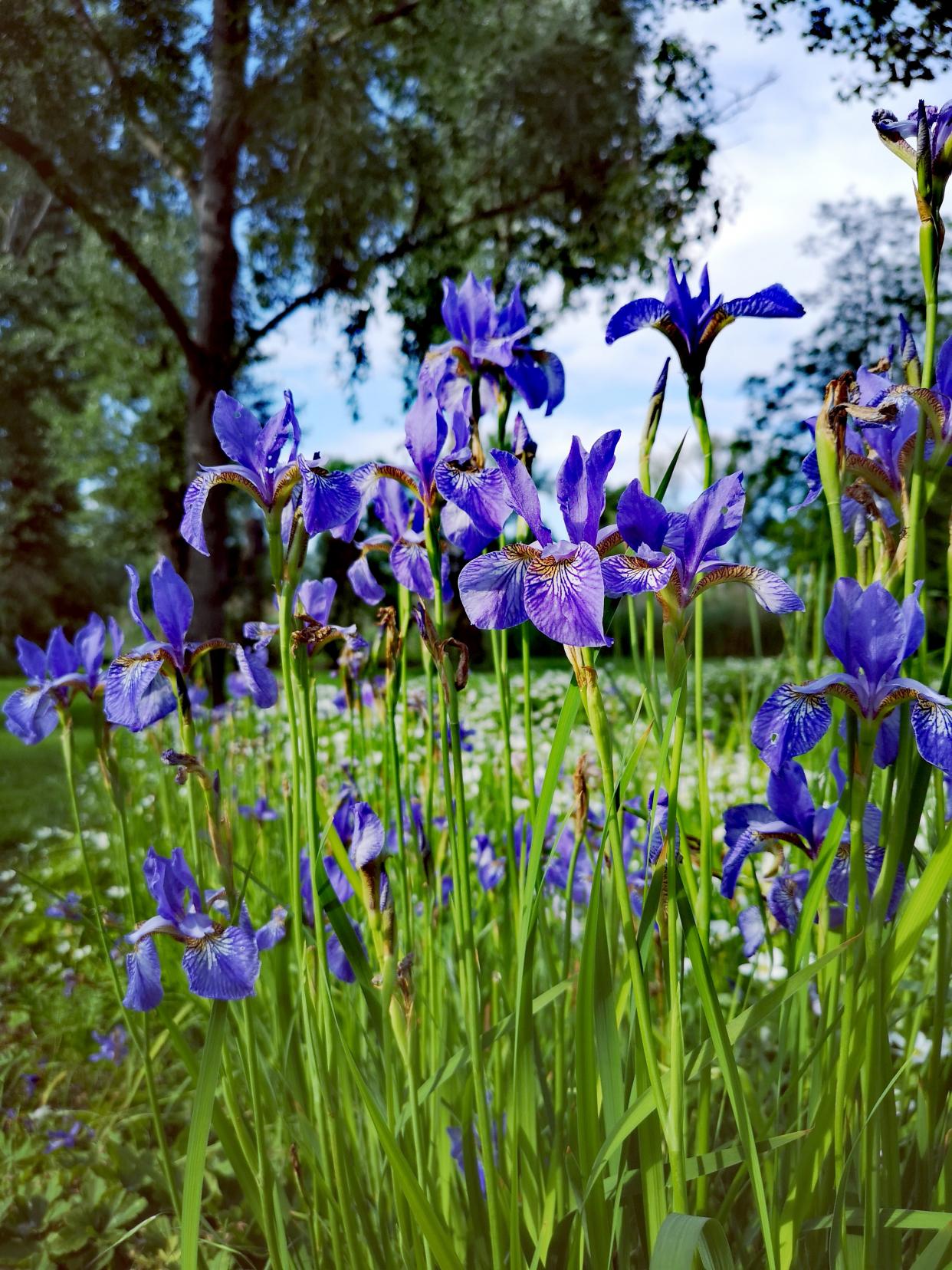
Although fasciation is rare overall, it has been observed in over 100 plant species, including members of the genera Acer, Aloe, Acanthosicyos, Cannabis, Celosia, Cycas, Delphinium, Digitalis, Euphorbia, Forsythia, Glycine max (specifically, soybean plants), Primula, Prunus, Salix and many genera of the cactus family, Cactaceae. Cresting results in undulating folds instead of the typical "arms" found on mature saguaro cactus.

Some varieties of Celosia are raised especially for their dependably fasciated flower heads, for which they are called "cockscomb". The Japanese fantail willow (Salix sachalinensis 'Sekka') is another plant that is valued for its fasciations.
Fasciation that is caused by damage to genetic material and by bacteria can be controlled by not using fasciated plants and disposing of fasciated plants. Avoiding injury to plant bases and keeping them dry can reduce the spread of bacteria. Avoidance of grafting fasciated plants and the pruning of fasciated matter can also reduce the spread of bacteria.

0
0
文章
ritau
2020年05月21日

A rose is a woody perennial flowering plant of the genus Rosa, in the family Rosaceae, or the flower it bears. There are over three hundred species and thousands of cultivars. They form a group of plants that can be erect shrubs, climbing, or trailing, with stems that are often armed with sharp prickles. Flowers vary in size and shape and are usually large and showy, in colours ranging from white through yellows and reds. Most species are native to Asia, with smaller numbers native to Europe, North America, and northwestern Africa. Species, cultivars and hybrids are all widely grown for their beauty and often are fragrant. Roses have acquired cultural significance in many societies. Rose plants range in size from compact, miniature roses, to climbers that can reach seven meters in height. Different species hybridize easily, and this has been used in the development of the wide range of garden roses.

The long cultural history of the rose has led to it being used often as a symbol. In ancient Greece, the rose was closely associated with the goddess Aphrodite. In the Iliad, Aphrodite protects the body of Hector using the "immortal oil of the rose" and the archaic Greek lyric poet Ibycus praises a beautiful youth saying that Aphrodite nursed him "among rose blossoms". The second-century AD Greek travel writer Pausanias associates the rose with the story of Adonis and states that the rose is red because Aphrodite wounded herself on one of its thorns and stained the flower red with her blood. Book Eleven of the ancient Roman novel The Golden Ass by Apuleius contains a scene in which the goddess Isis, who is identified with Venus, instructs the main character, Lucius, who has been transformed into a donkey, to eat rose petals from a crown of roses worn by a priest as part of a religious procession in order to regain his humanity.
Following the Christianization of the Roman Empire, the rose became identified with the Virgin Mary. The color of the rose and the number of roses received has symbolic representation. The rose symbol eventually led to the creation of the rosary and other devotional prayers in Christianity.
Ever since the 1400s, the Franciscans have had a Crown Rosary of the Seven Joys of the Blessed Virgin Mary. In the 1400s and 1500s, the Carthusians promoted the idea of sacred mysteries associated with the rose symbol and rose gardens. Albrecht Dürer's painting The Feast of the Rosary (1506) depicts the Virgin Mary distributing garlands of roses to her worshippers.
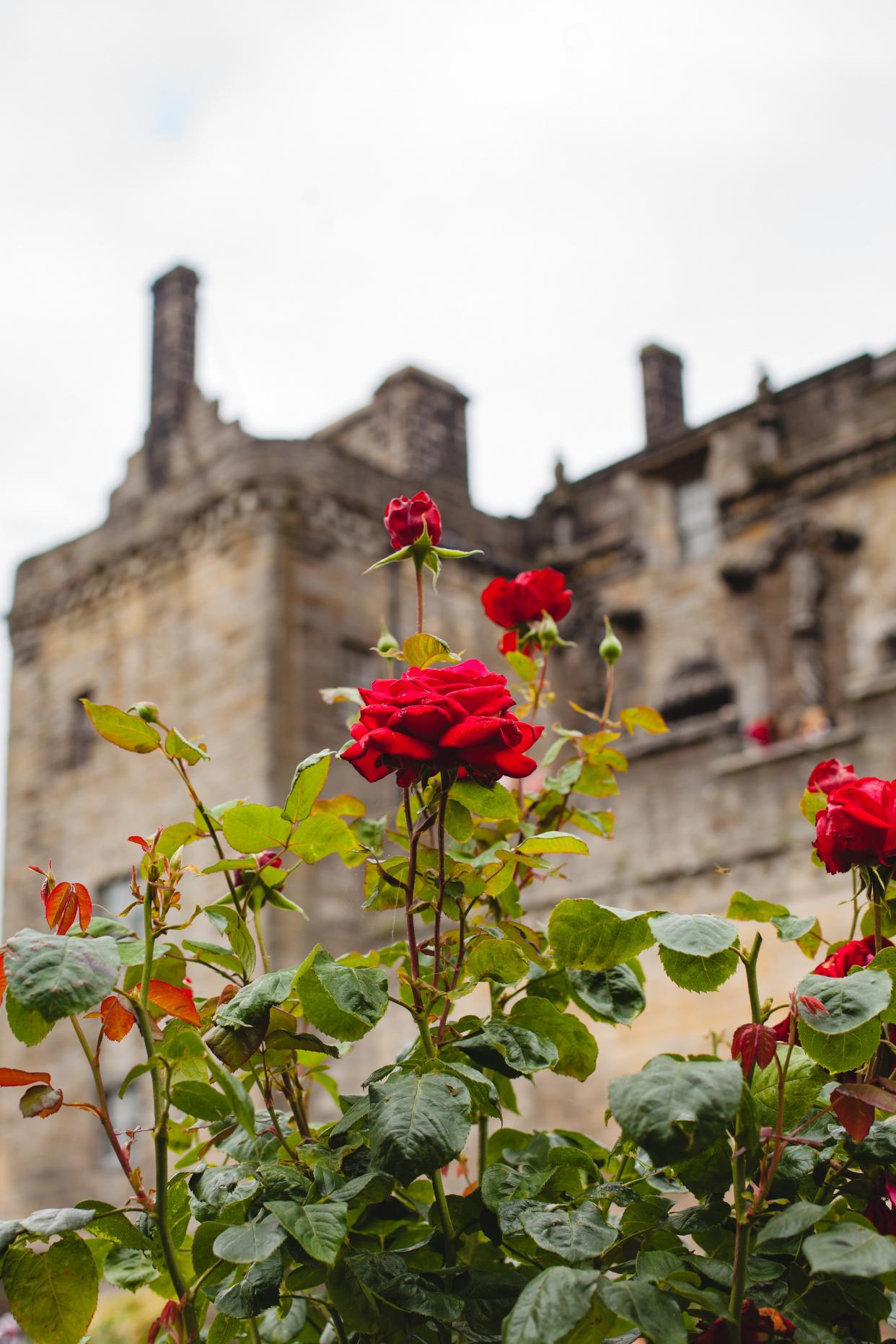
Roses symbolised the Houses of York and Lancaster in a conflict known as the Wars of the Roses.
Roses are a favored subject in art and appear in portraits, illustrations, on stamps, as ornaments or as architectural elements. The Luxembourg-born Belgian artist and botanist Pierre-Joseph Redouté is known for his detailed watercolours of flowers, particularly roses.
Henri Fantin-Latour was also a prolific painter of still life, particularly flowers including roses. The rose 'Fantin-Latour' was named after the artist.
Other impressionists including Claude Monet, Paul Cézanne and Pierre-Auguste Renoir have paintings of roses among their works.
In 1986 President Ronald Reagan signed legislation to make the rose the floral emblem of the United States.

The long cultural history of the rose has led to it being used often as a symbol. In ancient Greece, the rose was closely associated with the goddess Aphrodite. In the Iliad, Aphrodite protects the body of Hector using the "immortal oil of the rose" and the archaic Greek lyric poet Ibycus praises a beautiful youth saying that Aphrodite nursed him "among rose blossoms". The second-century AD Greek travel writer Pausanias associates the rose with the story of Adonis and states that the rose is red because Aphrodite wounded herself on one of its thorns and stained the flower red with her blood. Book Eleven of the ancient Roman novel The Golden Ass by Apuleius contains a scene in which the goddess Isis, who is identified with Venus, instructs the main character, Lucius, who has been transformed into a donkey, to eat rose petals from a crown of roses worn by a priest as part of a religious procession in order to regain his humanity.
Following the Christianization of the Roman Empire, the rose became identified with the Virgin Mary. The color of the rose and the number of roses received has symbolic representation. The rose symbol eventually led to the creation of the rosary and other devotional prayers in Christianity.
Ever since the 1400s, the Franciscans have had a Crown Rosary of the Seven Joys of the Blessed Virgin Mary. In the 1400s and 1500s, the Carthusians promoted the idea of sacred mysteries associated with the rose symbol and rose gardens. Albrecht Dürer's painting The Feast of the Rosary (1506) depicts the Virgin Mary distributing garlands of roses to her worshippers.

Roses symbolised the Houses of York and Lancaster in a conflict known as the Wars of the Roses.
Roses are a favored subject in art and appear in portraits, illustrations, on stamps, as ornaments or as architectural elements. The Luxembourg-born Belgian artist and botanist Pierre-Joseph Redouté is known for his detailed watercolours of flowers, particularly roses.
Henri Fantin-Latour was also a prolific painter of still life, particularly flowers including roses. The rose 'Fantin-Latour' was named after the artist.
Other impressionists including Claude Monet, Paul Cézanne and Pierre-Auguste Renoir have paintings of roses among their works.
In 1986 President Ronald Reagan signed legislation to make the rose the floral emblem of the United States.
0
0
文章
ritau
2020年05月08日

Blueberries are perennial flowering plants with blue or purple berries. They are classified in the section Cyanococcus within the genus Vaccinium. Vaccinium also includes cranberries, bilberries, huckleberries and Madeira blueberries.[1] Commercial blueberries—both wild (lowbush) and cultivated (highbush)—are all native to North America. The highbush varieties were introduced into Europe during the 1930s.
Blueberries are usually prostrate shrubs that can vary in size from 10 centimeters (3.9 in) to 4 meters (13 ft) in height. In commercial production of blueberries, the species with small, pea-size berries growing on low-level bushes are known as "lowbush blueberries" (synonymous with "wild"), while the species with larger berries growing on taller cultivated bushes are known as "highbush blueberries". Canada is the leading producer of lowbush blueberries, while the United States produces some 40% of the world supply of highbush blueberries.

The genus Vaccinium has a mostly circumpolar distribution, with species mainly present in North America, Europe, and Asia. Many commercially sold species with English common names including "blueberry" are from North America, particularly Atlantic Canada and Northeastern United States for wild (lowbush) blueberries, and several US states and British Columbia for cultivated (highbush) blueberries. Canada's First Nations people consumed wild blueberries for centuries before North America was colonized. Highbush blueberries were first cultivated in New Jersey around the beginning of the 20th century.
North American native species of blueberries are grown commercially in the Southern Hemisphere in Australia, New Zealand and South American nations. Several other wild shrubs of the genus Vaccinium also produce commonly eaten blue berries, such as the predominantly European Vaccinium myrtillus and other bilberries, which in many languages have a name that translates to "blueberry" in English.
*Nutrients
Blueberries consist of 14% carbohydrates, 0.7% protein, 0.3% fat and 84% water (table). They contain only negligible amounts of micronutrients, with moderate levels (relative to respective Daily Values) (DV) of the essential dietary mineral manganese, vitamin C, vitamin K and dietary fiber (table). Generally, nutrient contents of blueberries are a low percentage of the DV (table). One serving provides a relatively low caloric value of 57 kcal with a glycemic load of 6.

*Phytochemicals and research
Blueberries contain anthocyanins, other polyphenols and various phytochemicals under preliminary research for their potential role in the human body. Most polyphenol studies have been conducted using the highbush cultivar of blueberries (V. corymbosum), while content of polyphenols and anthocyanins in lowbush (wild) blueberries (V. angustifolium) exceeds values found in highbush cultivars.
Blueberries are usually prostrate shrubs that can vary in size from 10 centimeters (3.9 in) to 4 meters (13 ft) in height. In commercial production of blueberries, the species with small, pea-size berries growing on low-level bushes are known as "lowbush blueberries" (synonymous with "wild"), while the species with larger berries growing on taller cultivated bushes are known as "highbush blueberries". Canada is the leading producer of lowbush blueberries, while the United States produces some 40% of the world supply of highbush blueberries.

The genus Vaccinium has a mostly circumpolar distribution, with species mainly present in North America, Europe, and Asia. Many commercially sold species with English common names including "blueberry" are from North America, particularly Atlantic Canada and Northeastern United States for wild (lowbush) blueberries, and several US states and British Columbia for cultivated (highbush) blueberries. Canada's First Nations people consumed wild blueberries for centuries before North America was colonized. Highbush blueberries were first cultivated in New Jersey around the beginning of the 20th century.
North American native species of blueberries are grown commercially in the Southern Hemisphere in Australia, New Zealand and South American nations. Several other wild shrubs of the genus Vaccinium also produce commonly eaten blue berries, such as the predominantly European Vaccinium myrtillus and other bilberries, which in many languages have a name that translates to "blueberry" in English.
*Nutrients
Blueberries consist of 14% carbohydrates, 0.7% protein, 0.3% fat and 84% water (table). They contain only negligible amounts of micronutrients, with moderate levels (relative to respective Daily Values) (DV) of the essential dietary mineral manganese, vitamin C, vitamin K and dietary fiber (table). Generally, nutrient contents of blueberries are a low percentage of the DV (table). One serving provides a relatively low caloric value of 57 kcal with a glycemic load of 6.

*Phytochemicals and research
Blueberries contain anthocyanins, other polyphenols and various phytochemicals under preliminary research for their potential role in the human body. Most polyphenol studies have been conducted using the highbush cultivar of blueberries (V. corymbosum), while content of polyphenols and anthocyanins in lowbush (wild) blueberries (V. angustifolium) exceeds values found in highbush cultivars.
0
0
文章
ritau
2020年04月25日

1. Choose houseplants suited for your available light conditions.
The first step in preventing insects actually arises when you choose your plants. Make sure each houseplant is well suited to the amount of light it will receive once in position. Plants in unfavorable light conditions are subjected to stress, which makes them more susceptible to insect infestation.
2. Make sure your houseplants are potted in sterile soil.
While bacteria, fungus, and insects are a vital component of outdoor soil health, houseplants are better planted in store bought potting mix, which will generally be sterile. Using outdoor garden soil can introduce insect larvae into your houseplants.
3. Clean your houseplants regularly.
Dust buildup on your houseplant leaves often contains organic compounds (like skin cells or pet hair) that insects can feed on. Furthermore, insects like mites thrive in thick layers of dust and will be less likely to infest a clean plant.
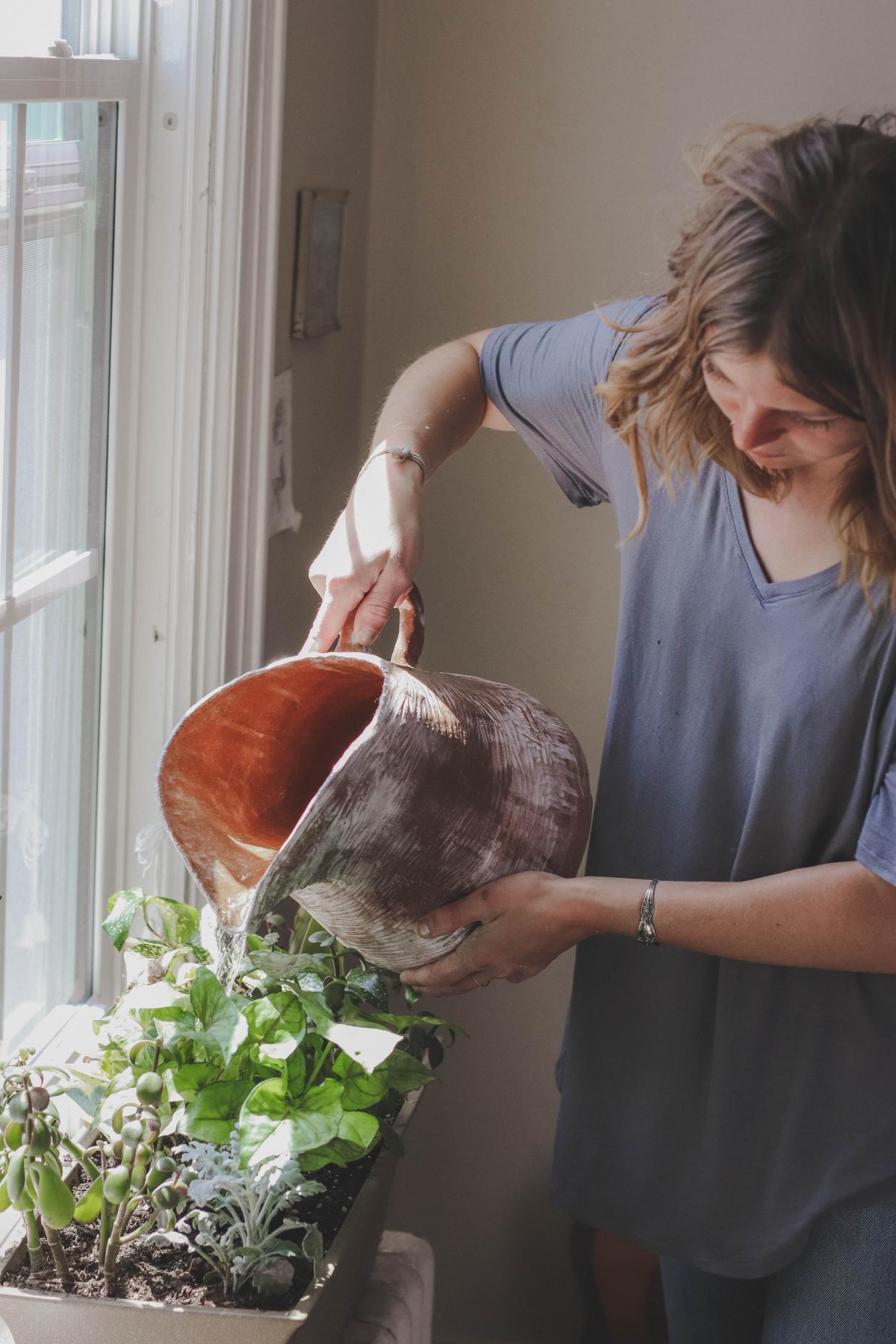
4. Inspect your plants regularly for insect damage.
This may sound obvious, but in fact most insect infestations can be mitigated if you are monitoring your houseplants closely enough to catch the early signs. Discolored, speckled, mottled, and chewed up leaves can indicate insect activity. Of course, you may also be able to see the insects themselves as well as their eggs, larvae, or cast off skins.
5. Control existing insect infestations as well as possible. Even if you take the precautionary steps above, you may still find yourself faced with insects in your houseplants. There are several method you can use to kill and remove insects.
*Sticky traps can be used to control infestations of flying insects such as fruit flies, gnats, and winged aphids. These traps are usually yellow in appearance and can be hung near the infested houseplant.
*Pruning can help control isolated insect infestations. If you notice that most of the insects are concentrated on a few leaves of a plant, prune these leaves away and throw them out.
*Wash small insects away with soapy water. Small insects like aphids and mealybugs can be removed by rubbing the plant's leaves with a cloth moistened with soapy water.
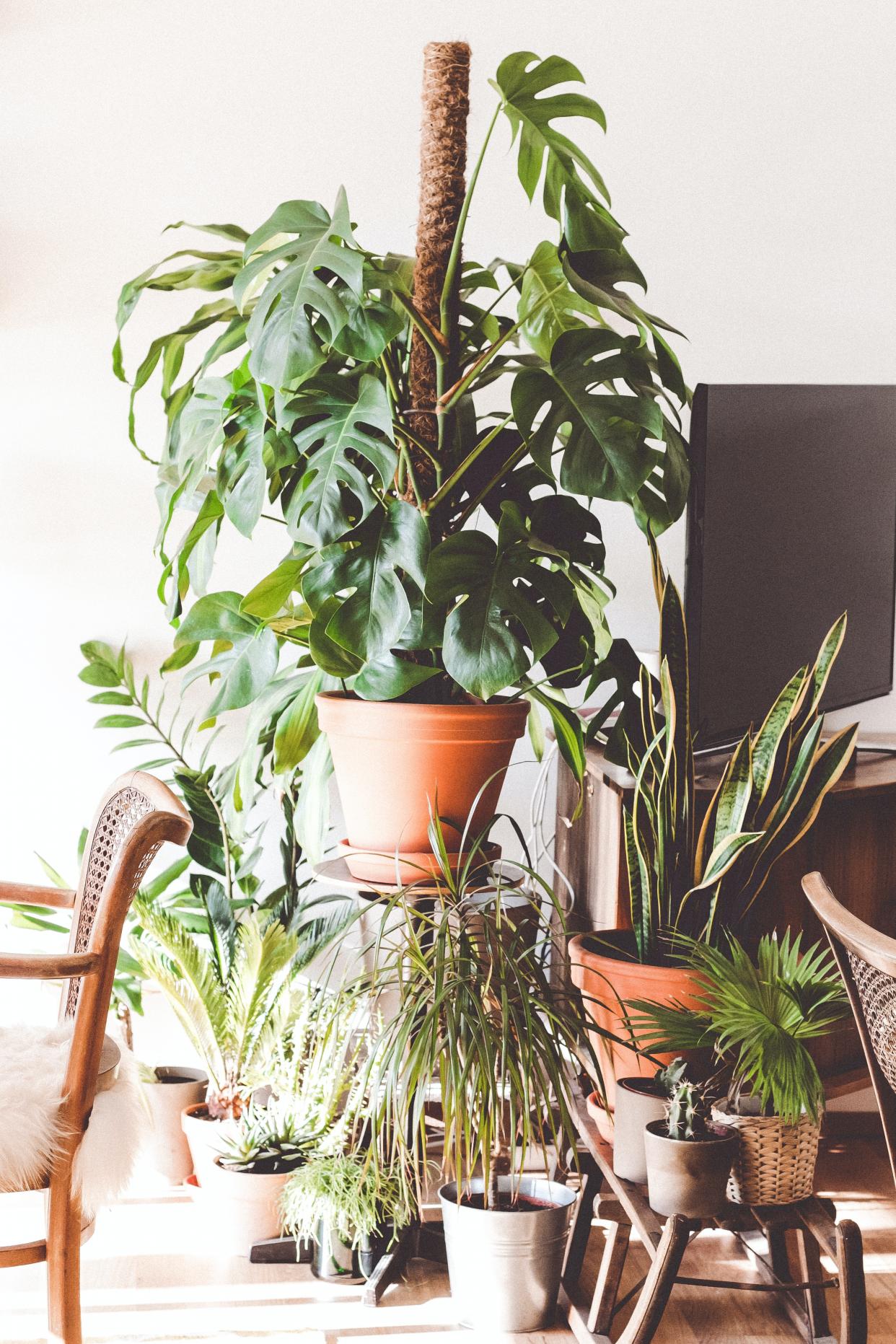
6. Know when to give up on an infested houseplant.
The unfortunate truth is that when a houseplant becomes badly infested with insects, it is near impossible to remove the insects and return the plant to health. In bad cases, throw the entire plant away before the insects spread to other houseplants in your home.via wikihow
The first step in preventing insects actually arises when you choose your plants. Make sure each houseplant is well suited to the amount of light it will receive once in position. Plants in unfavorable light conditions are subjected to stress, which makes them more susceptible to insect infestation.
2. Make sure your houseplants are potted in sterile soil.
While bacteria, fungus, and insects are a vital component of outdoor soil health, houseplants are better planted in store bought potting mix, which will generally be sterile. Using outdoor garden soil can introduce insect larvae into your houseplants.
3. Clean your houseplants regularly.
Dust buildup on your houseplant leaves often contains organic compounds (like skin cells or pet hair) that insects can feed on. Furthermore, insects like mites thrive in thick layers of dust and will be less likely to infest a clean plant.

4. Inspect your plants regularly for insect damage.
This may sound obvious, but in fact most insect infestations can be mitigated if you are monitoring your houseplants closely enough to catch the early signs. Discolored, speckled, mottled, and chewed up leaves can indicate insect activity. Of course, you may also be able to see the insects themselves as well as their eggs, larvae, or cast off skins.
5. Control existing insect infestations as well as possible. Even if you take the precautionary steps above, you may still find yourself faced with insects in your houseplants. There are several method you can use to kill and remove insects.
*Sticky traps can be used to control infestations of flying insects such as fruit flies, gnats, and winged aphids. These traps are usually yellow in appearance and can be hung near the infested houseplant.
*Pruning can help control isolated insect infestations. If you notice that most of the insects are concentrated on a few leaves of a plant, prune these leaves away and throw them out.
*Wash small insects away with soapy water. Small insects like aphids and mealybugs can be removed by rubbing the plant's leaves with a cloth moistened with soapy water.

6. Know when to give up on an infested houseplant.
The unfortunate truth is that when a houseplant becomes badly infested with insects, it is near impossible to remove the insects and return the plant to health. In bad cases, throw the entire plant away before the insects spread to other houseplants in your home.via wikihow
0
0
文章
ritau
2020年04月15日

Helianthus is a genus of plants comprising about 70 species. Except for three species in South America, all Helianthus species are native to North America and Central America. The common names "sunflower" and "common sunflower" typically refer to the popular annual species Helianthus annuus, whose round flower heads in combination with the ligules look like the sun. This and other species, notably Jerusalem artichoke , are cultivated in temperate regions and some tropical regions as food crops for humans, cattle, and poultry, and as ornamental plants.The species H. annuus typically grows during the summer and into early fall, with the peak growth season being mid-summer.
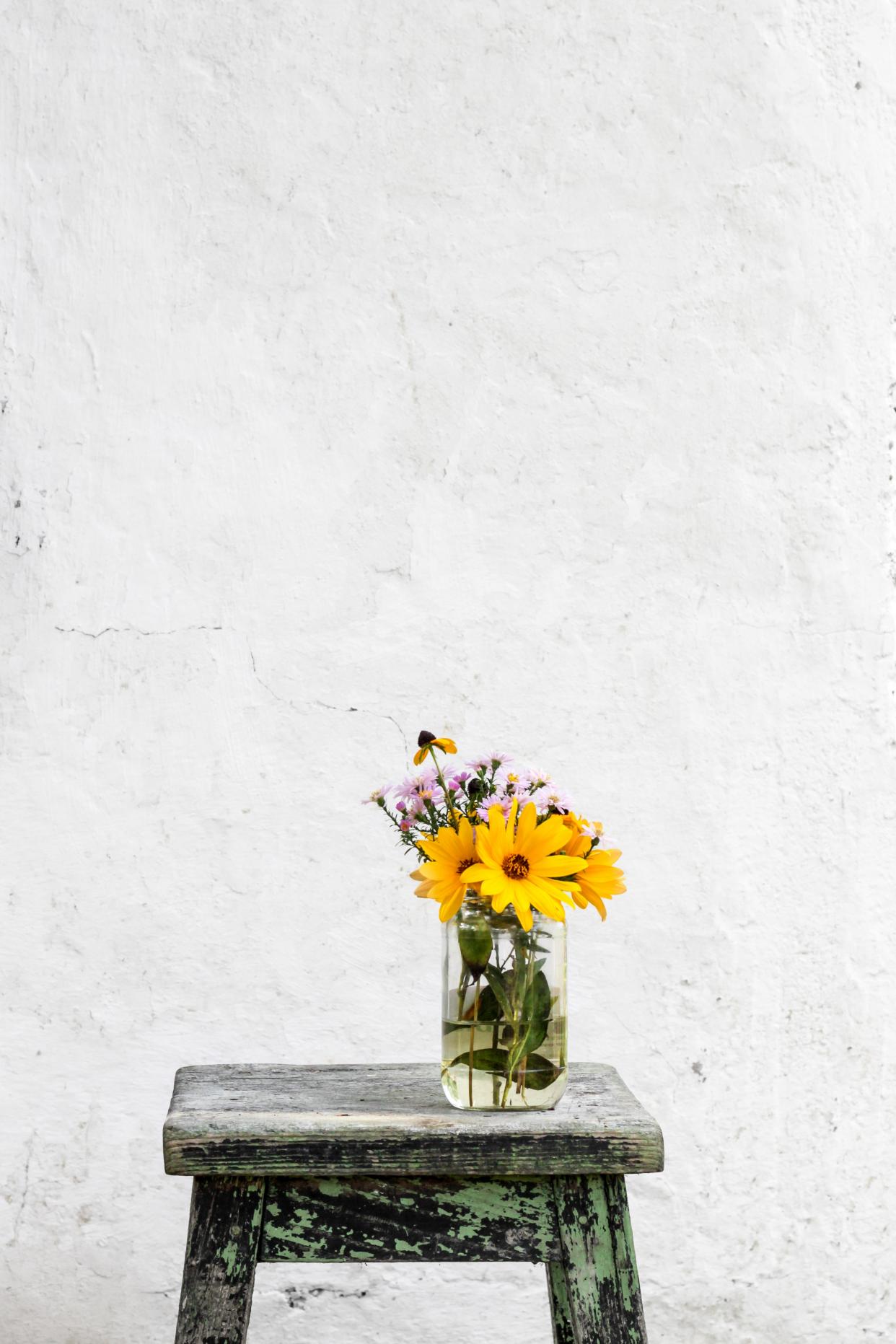
Perennial sunflower species are not as common in garden use due to their tendency to spread rapidly and become invasive. The whorled sunflower, Helianthus verticillatus, was listed as an endangered species in 2014 when the U.S. Fish and Wildlife Service issued a final rule protecting it under the Endangered Species Act. The primary threats are industrial forestry and pine plantations in Alabama, Georgia, and Tennessee. They grow to 1.8 m (6 ft) and are primarily found in woodlands, adjacent to creeks and moist, prairie-like areas.
I believe the most famous sunflower is Vincent van Gogh's.
Van Gogh’s paintings of Sunflowers are among his most famous. He did them in Arles, in the south of France, in 1888 and 1889. Vincent painted a total of five large canvases with sunflowers in a vase, with three shades of yellow ‘and nothing else’. In this way, he demonstrated that it was possible to create an image with numerous variations of a single colour, without any loss of eloquence.
The sunflower paintings had a special significance for Van Gogh: they communicated ‘gratitude’, he wrote. He hung the first two in the room of his friend, the painter Paul Gauguin, who came to live with him for a while in the Yellow House. Gauguin was impressed by the sunflowers, which he thought were ‘completely Vincent’. Van Gogh had already painted a new version during his friend’s stay and Gauguin later asked for one as a gift, which Vincent was reluctant to give him. He later produced two loose copies, however, one of which is now in the Van Gogh Museum.
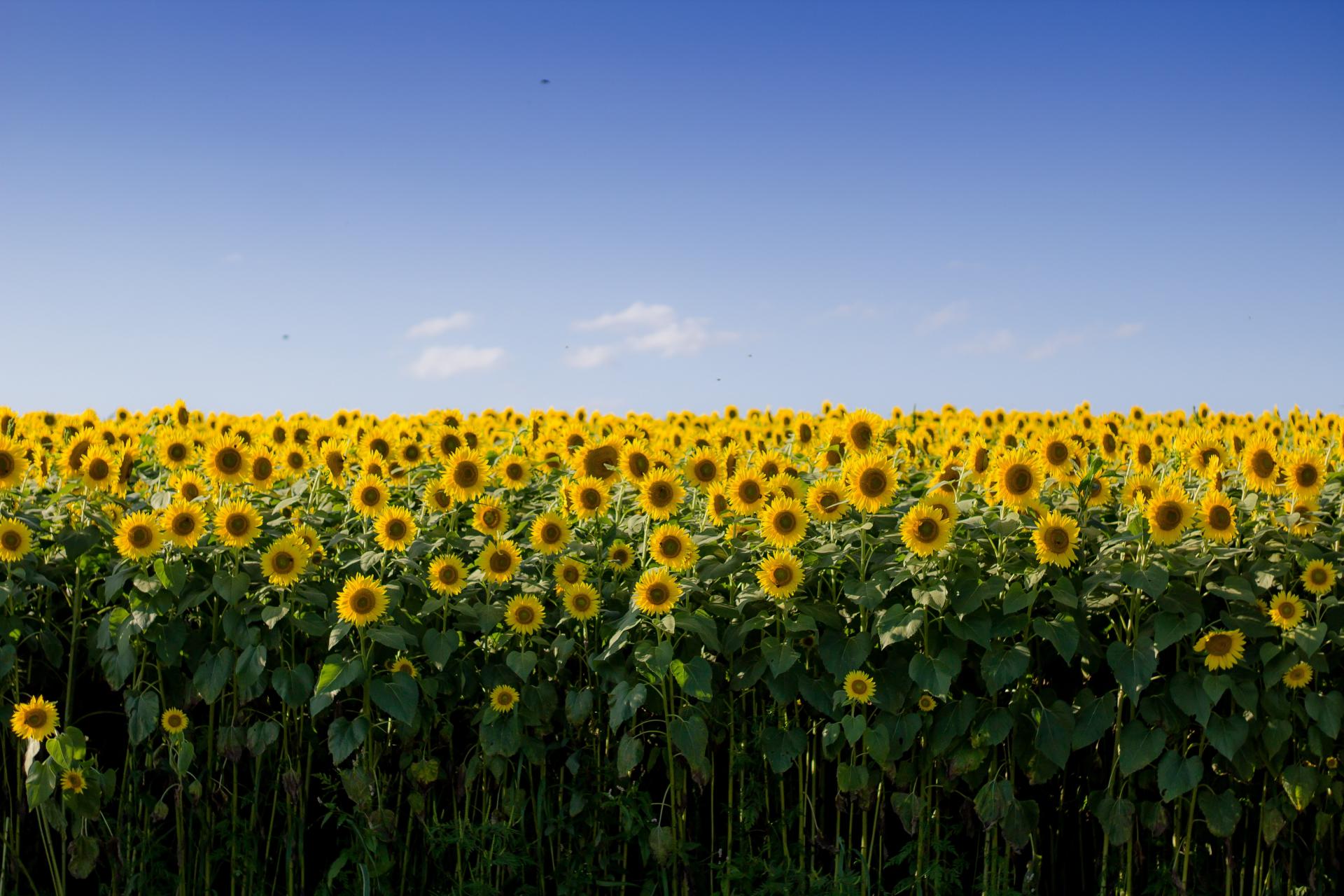

Perennial sunflower species are not as common in garden use due to their tendency to spread rapidly and become invasive. The whorled sunflower, Helianthus verticillatus, was listed as an endangered species in 2014 when the U.S. Fish and Wildlife Service issued a final rule protecting it under the Endangered Species Act. The primary threats are industrial forestry and pine plantations in Alabama, Georgia, and Tennessee. They grow to 1.8 m (6 ft) and are primarily found in woodlands, adjacent to creeks and moist, prairie-like areas.
I believe the most famous sunflower is Vincent van Gogh's.
Van Gogh’s paintings of Sunflowers are among his most famous. He did them in Arles, in the south of France, in 1888 and 1889. Vincent painted a total of five large canvases with sunflowers in a vase, with three shades of yellow ‘and nothing else’. In this way, he demonstrated that it was possible to create an image with numerous variations of a single colour, without any loss of eloquence.
The sunflower paintings had a special significance for Van Gogh: they communicated ‘gratitude’, he wrote. He hung the first two in the room of his friend, the painter Paul Gauguin, who came to live with him for a while in the Yellow House. Gauguin was impressed by the sunflowers, which he thought were ‘completely Vincent’. Van Gogh had already painted a new version during his friend’s stay and Gauguin later asked for one as a gift, which Vincent was reluctant to give him. He later produced two loose copies, however, one of which is now in the Van Gogh Museum.

0
0
文章
ritau
2020年04月12日

Indoor activity for Quarantine!
1. Know when to transplant.
Aloe plants have relatively short roots and heavy leaves, so they are commonly moved to a heavier pot when they become top-heavy and tip over. If Aloe vera runs out of space for its roots to grow, it may start to produce "pups" that can be moved to their own pot (see the Propagating section). If you are more interested in the adult plant growing than producing new plants, transplant it to a larger pot before the roots begin to circle the walls of its container.
2. Give the plant adequate sunlight and warmth.
Aloe vera plants prefer 8–10 hours of sunlight a day. While they grow best in warm or hot temperatures, they are capable of surviving cooler seasons in a more dormant state. However, they may suffer harm if exposed to temperatures below 25ºF (-4ºC).
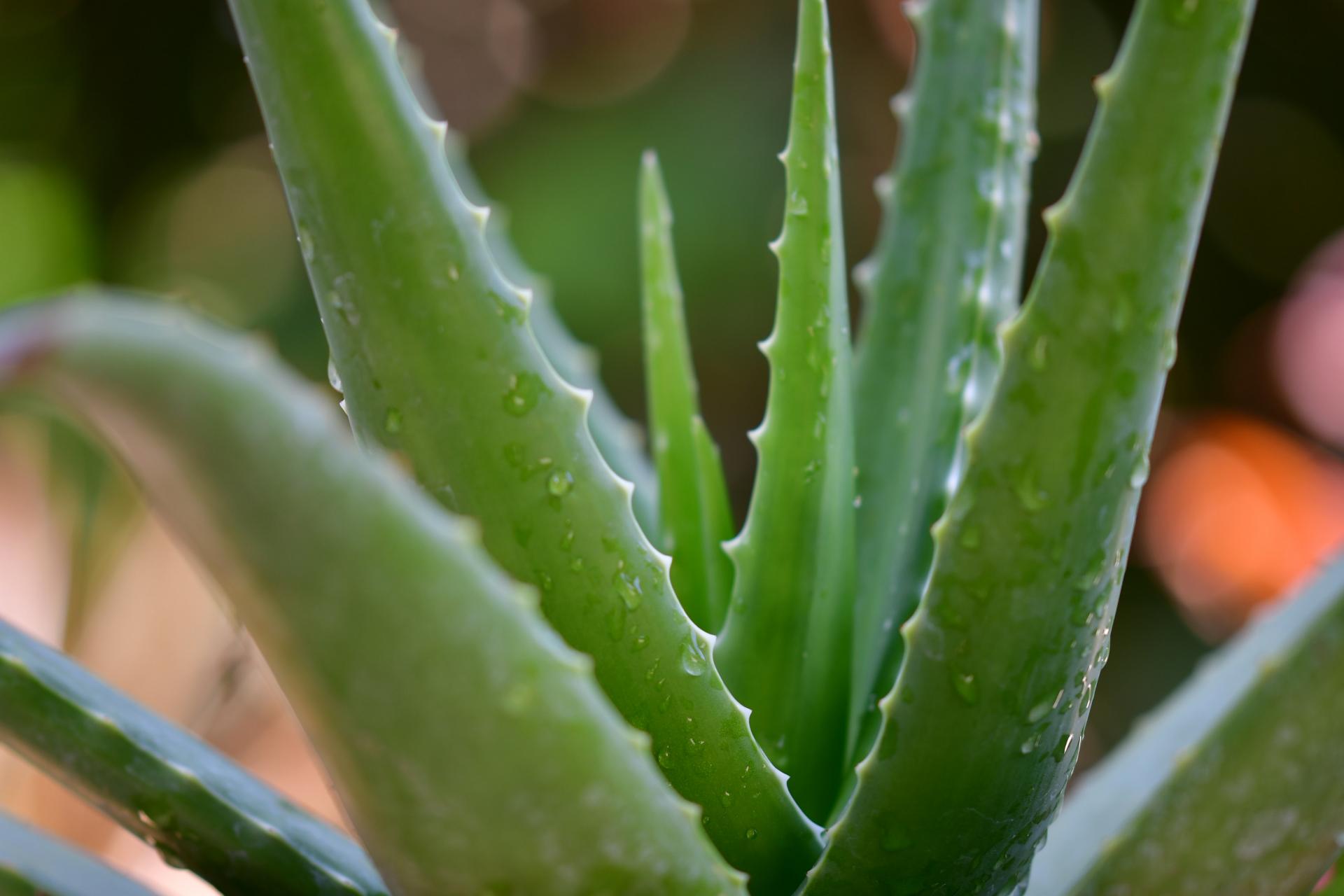
3. Plant the Aloe vera in well draining soil.
Aloe vera plants are adapted for survival in dry conditions, and may rot if planted in soil that collects standing water. Use a cactus potting mix, or create your own mix using equal parts soil, sand, and gravel.
4. Cover the root ball when planting but do not let the leaves touch the soil.
Place the Aloe vera root ball just below the soil surface. If any of the thick, green leaves are partially buried or touch the soil, they may rot.
5. Cover the surface of the soil with gravel or pebbles (optional).
Place a layer of small rocks around the base of the aloe plant to keep the soil in place and reduce evaporation. This is not required for your aloe plant to thrive, so you may leave the soil exposed if you prefer the appearance.
6. Do not water for the first few days after planting.
Before you start watering, give the aloe plant a few days to repair any roots that may have been damaged during planting. Watering damaged roots increases the chance of root rot. Aloe plants store plenty of water in their leaves, and should not be harmed by the lack of water during this time. Give it a light watering the first one or two times you water if you would like to be extra safe.

Enjoy your DIY!
1. Know when to transplant.
Aloe plants have relatively short roots and heavy leaves, so they are commonly moved to a heavier pot when they become top-heavy and tip over. If Aloe vera runs out of space for its roots to grow, it may start to produce "pups" that can be moved to their own pot (see the Propagating section). If you are more interested in the adult plant growing than producing new plants, transplant it to a larger pot before the roots begin to circle the walls of its container.
2. Give the plant adequate sunlight and warmth.
Aloe vera plants prefer 8–10 hours of sunlight a day. While they grow best in warm or hot temperatures, they are capable of surviving cooler seasons in a more dormant state. However, they may suffer harm if exposed to temperatures below 25ºF (-4ºC).

3. Plant the Aloe vera in well draining soil.
Aloe vera plants are adapted for survival in dry conditions, and may rot if planted in soil that collects standing water. Use a cactus potting mix, or create your own mix using equal parts soil, sand, and gravel.
4. Cover the root ball when planting but do not let the leaves touch the soil.
Place the Aloe vera root ball just below the soil surface. If any of the thick, green leaves are partially buried or touch the soil, they may rot.
5. Cover the surface of the soil with gravel or pebbles (optional).
Place a layer of small rocks around the base of the aloe plant to keep the soil in place and reduce evaporation. This is not required for your aloe plant to thrive, so you may leave the soil exposed if you prefer the appearance.
6. Do not water for the first few days after planting.
Before you start watering, give the aloe plant a few days to repair any roots that may have been damaged during planting. Watering damaged roots increases the chance of root rot. Aloe plants store plenty of water in their leaves, and should not be harmed by the lack of water during this time. Give it a light watering the first one or two times you water if you would like to be extra safe.

Enjoy your DIY!
0
0
文章
ritau
2020年04月06日

Boring at home? Let's do some indoor gardening!
1. Choose a lettuce variety that thrives indoors. Although most lettuce plants can stay healthy indoors, you'll have better success with some varieties over others. Buy any of these lettuce varieties, which are known for growing well inside, from a garden center or plant nursery:
Garden Babies/Merlot/Baby Oakleaf/Salad Bowl/Lollo Rosa/Black-Seeded Simpson/Tom Thumb/Red Deer Tongue
2. Fill a pot with a seed starting soil mix. Seed starting mixes are lightweight, they help your plants’ roots grow, and they're well-draining to prevent overwatering. If you cannot find a seed starting mix, you can also create a soil made from equal parts peat moss or coir, vermiculite, and sand.
Each lettuce plant requires 4–6 in (10–15 cm) of space and a depth of about 8 inches (20 cm). Choose a pot that can accommodate these measurements.
Purchase pots with drainage holes on the bottom. Place a saucer underneath the pot to catch draining water.
3. Plant your seeds approximately 1 in (2.5 cm) apart. Dig a 4–6 in (10–15 cm) deep hole and place your seeds inside at about 1 in (2.5 cm) apart. Limit your seeds to 4 per pot to avoid overcrowding the lettuce as it grows. If you want to plant more than 4 seeds, prepare several pots ahead of time.
4. Sprinkle your seeds lightly with potting soil and water. Take a handful of potting soil and gently sprinkle it over the newly-planted seeds. Fill a spray bottle with water and gently mist the seeds to avoid washing them away.
5. Plant lettuce seedlings if you don't want to wait for seeds to sprout. If you don't want to wait for seeds to sprout, you can plant lettuce seedlings instead. Use the same technique as you would for lettuce seedlings, planting no more than 4 per pot.
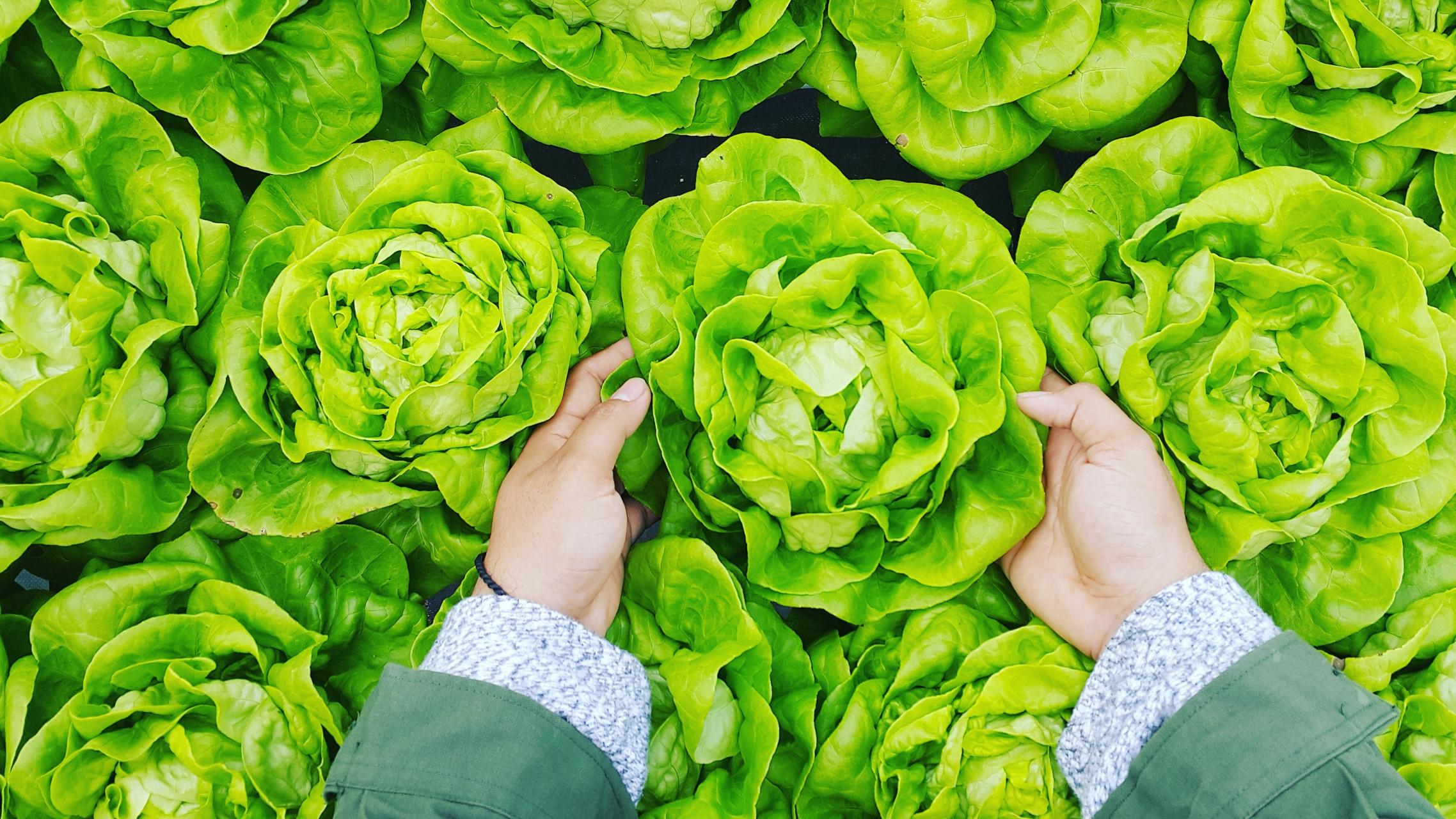
Tips to care for
*Grow your lettuce in room temperature conditions. Lettuce grows best at temperatures around 65–70 °F (18–21 °C). Turn on the air conditioner or heater as needed to keep your plants at an even, sustainable temperature.
*Place your lettuce plant near a sunny window or a fluorescent grow light. Lettuce plants grow best with direct sunlight. If you're in a climate with very little sun, purchase a grow light from a plant nursery and position it about 12 inches (30 cm) overhead.
*Fertilize your lettuce 3 weeks after planting it. Lettuce needs nitrogen-rich soil to grow, so spray a liquid fertilizer on the plant 3 weeks after you planted it, or when the first leaves grow on the plant. Spray the fertilizer mainly near the soil, avoiding the lettuce leaves to prevent burning them.
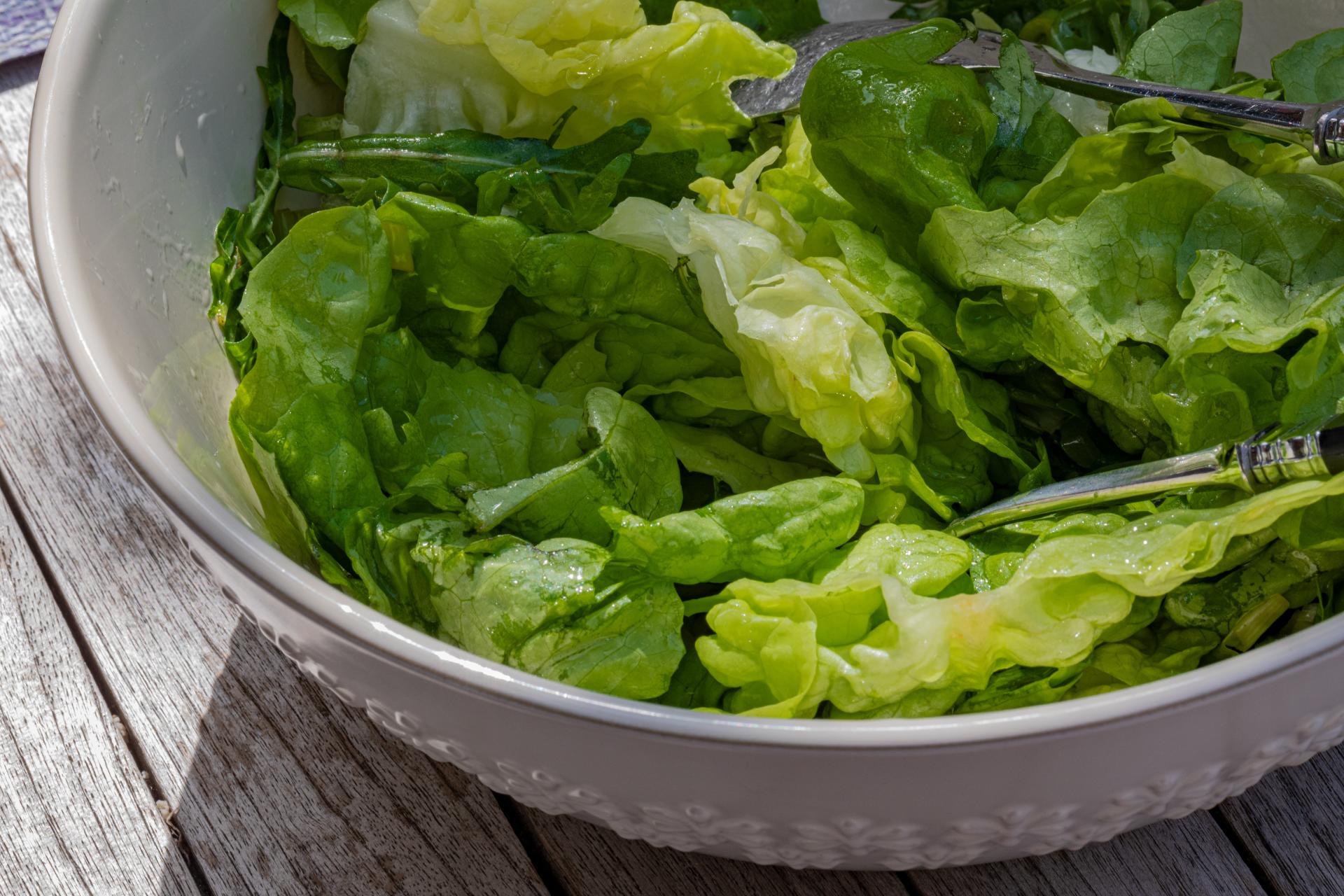
1. Choose a lettuce variety that thrives indoors. Although most lettuce plants can stay healthy indoors, you'll have better success with some varieties over others. Buy any of these lettuce varieties, which are known for growing well inside, from a garden center or plant nursery:
Garden Babies/Merlot/Baby Oakleaf/Salad Bowl/Lollo Rosa/Black-Seeded Simpson/Tom Thumb/Red Deer Tongue
2. Fill a pot with a seed starting soil mix. Seed starting mixes are lightweight, they help your plants’ roots grow, and they're well-draining to prevent overwatering. If you cannot find a seed starting mix, you can also create a soil made from equal parts peat moss or coir, vermiculite, and sand.
Each lettuce plant requires 4–6 in (10–15 cm) of space and a depth of about 8 inches (20 cm). Choose a pot that can accommodate these measurements.
Purchase pots with drainage holes on the bottom. Place a saucer underneath the pot to catch draining water.
3. Plant your seeds approximately 1 in (2.5 cm) apart. Dig a 4–6 in (10–15 cm) deep hole and place your seeds inside at about 1 in (2.5 cm) apart. Limit your seeds to 4 per pot to avoid overcrowding the lettuce as it grows. If you want to plant more than 4 seeds, prepare several pots ahead of time.
4. Sprinkle your seeds lightly with potting soil and water. Take a handful of potting soil and gently sprinkle it over the newly-planted seeds. Fill a spray bottle with water and gently mist the seeds to avoid washing them away.
5. Plant lettuce seedlings if you don't want to wait for seeds to sprout. If you don't want to wait for seeds to sprout, you can plant lettuce seedlings instead. Use the same technique as you would for lettuce seedlings, planting no more than 4 per pot.

Tips to care for
*Grow your lettuce in room temperature conditions. Lettuce grows best at temperatures around 65–70 °F (18–21 °C). Turn on the air conditioner or heater as needed to keep your plants at an even, sustainable temperature.
*Place your lettuce plant near a sunny window or a fluorescent grow light. Lettuce plants grow best with direct sunlight. If you're in a climate with very little sun, purchase a grow light from a plant nursery and position it about 12 inches (30 cm) overhead.
*Fertilize your lettuce 3 weeks after planting it. Lettuce needs nitrogen-rich soil to grow, so spray a liquid fertilizer on the plant 3 weeks after you planted it, or when the first leaves grow on the plant. Spray the fertilizer mainly near the soil, avoiding the lettuce leaves to prevent burning them.

0
0
文章
ritau
2020年04月02日

Today, we are going to introduce 7 ways to make fertilizer that you can easy to handle with at home. Let's take a look!
1.Use water from a freshwater aquarium.
Freshwater aquariums contain nitrogen, which can provide your plants with a healthy boost. Fish naturally release nitrogen into the water, making their "waste" water an important source of nutrients for plants. Instead of dumping it down the toilet, use it to water your plants once a week. Fish waste, as well, contains trace elements important for plant growth.

2.Create a coffee compost.
Mix coffee grounds with leafy yard waste for "quick compost," especially for acid-loving plants. Mix your coffee grounds with an equal amount of dead leaves, pine straw, and other brown yard clippings and sprinkle over the soil once a month. Roses, azaleas, hydrangeas, and many other plants crave a low pH soil and will respond particularly well.
3.Use eggshells.
Spread old eggshells over your garden, or in the bottom of planting holes, for a calcium boost. Plants like tomatoes and peppers particularly love calcium, but your whole garden will enjoy eggshells. Calcium, which is over 90% of an eggshell's makeup, helps a plant develop strong cell walls. To use eggshells, lightly crush up the shells and spread over the garden. You can till them into the soil or leave them right on top -- they decompose very quickly.

4.Brew grass tea.
Make a "nutrient tea" with grass clippings from your yard. Use the bag on your lawnmower to keep the clippings the next time you cut the grass. Use them to fill up a 5-gallon bucket roughly 2/3s of the way to the top, then fill it near the top with water. Stir it quickly, then let it sit for three days, stirring once each morning. When done, strain out the grass clippings and use your "tea" to water your plants, providing essential nitrogen, by mixing it with an equal amount of water and spraying over the plants.
5.Save and spread your fireplace ashes. Wood ash is high in calcium and potassium, making it an excellent supplement to your soil. Simply spread it right over the garden, using your hands to lightly turn it into the top layer of the soil.
*Vegetables, in particular, tend to love ash, as it promotes healthy root growth.
*Warning: Do not use fireplace ashes on plants that love acidic soil like blueberries, roses, or azaleas.

6.Try banana peels. Cut up banana peels and add them to the hole when planting. Banana peels don't do much once the plant is already in the ground, but it can work wonders as you're planting. The peels contain a lot of potassium, which promotes a plant's root development. Cut up half a banana peel and toss it in the bottom of your hole before adding the plant.
7.Make your own compost. Composting at home is easy, so you can turn all of your old food scraps, leaves, and plant clippings into food for your garden. When organic matter decays, it releases nutrients that can enrich your soil. You can build your own compost in your yard, or you can try one of the commercially-available kitchen compost units.
via wikihow
1.Use water from a freshwater aquarium.
Freshwater aquariums contain nitrogen, which can provide your plants with a healthy boost. Fish naturally release nitrogen into the water, making their "waste" water an important source of nutrients for plants. Instead of dumping it down the toilet, use it to water your plants once a week. Fish waste, as well, contains trace elements important for plant growth.

2.Create a coffee compost.
Mix coffee grounds with leafy yard waste for "quick compost," especially for acid-loving plants. Mix your coffee grounds with an equal amount of dead leaves, pine straw, and other brown yard clippings and sprinkle over the soil once a month. Roses, azaleas, hydrangeas, and many other plants crave a low pH soil and will respond particularly well.
3.Use eggshells.
Spread old eggshells over your garden, or in the bottom of planting holes, for a calcium boost. Plants like tomatoes and peppers particularly love calcium, but your whole garden will enjoy eggshells. Calcium, which is over 90% of an eggshell's makeup, helps a plant develop strong cell walls. To use eggshells, lightly crush up the shells and spread over the garden. You can till them into the soil or leave them right on top -- they decompose very quickly.

4.Brew grass tea.
Make a "nutrient tea" with grass clippings from your yard. Use the bag on your lawnmower to keep the clippings the next time you cut the grass. Use them to fill up a 5-gallon bucket roughly 2/3s of the way to the top, then fill it near the top with water. Stir it quickly, then let it sit for three days, stirring once each morning. When done, strain out the grass clippings and use your "tea" to water your plants, providing essential nitrogen, by mixing it with an equal amount of water and spraying over the plants.
5.Save and spread your fireplace ashes. Wood ash is high in calcium and potassium, making it an excellent supplement to your soil. Simply spread it right over the garden, using your hands to lightly turn it into the top layer of the soil.
*Vegetables, in particular, tend to love ash, as it promotes healthy root growth.
*Warning: Do not use fireplace ashes on plants that love acidic soil like blueberries, roses, or azaleas.

6.Try banana peels. Cut up banana peels and add them to the hole when planting. Banana peels don't do much once the plant is already in the ground, but it can work wonders as you're planting. The peels contain a lot of potassium, which promotes a plant's root development. Cut up half a banana peel and toss it in the bottom of your hole before adding the plant.
7.Make your own compost. Composting at home is easy, so you can turn all of your old food scraps, leaves, and plant clippings into food for your garden. When organic matter decays, it releases nutrients that can enrich your soil. You can build your own compost in your yard, or you can try one of the commercially-available kitchen compost units.
via wikihow
0
0




